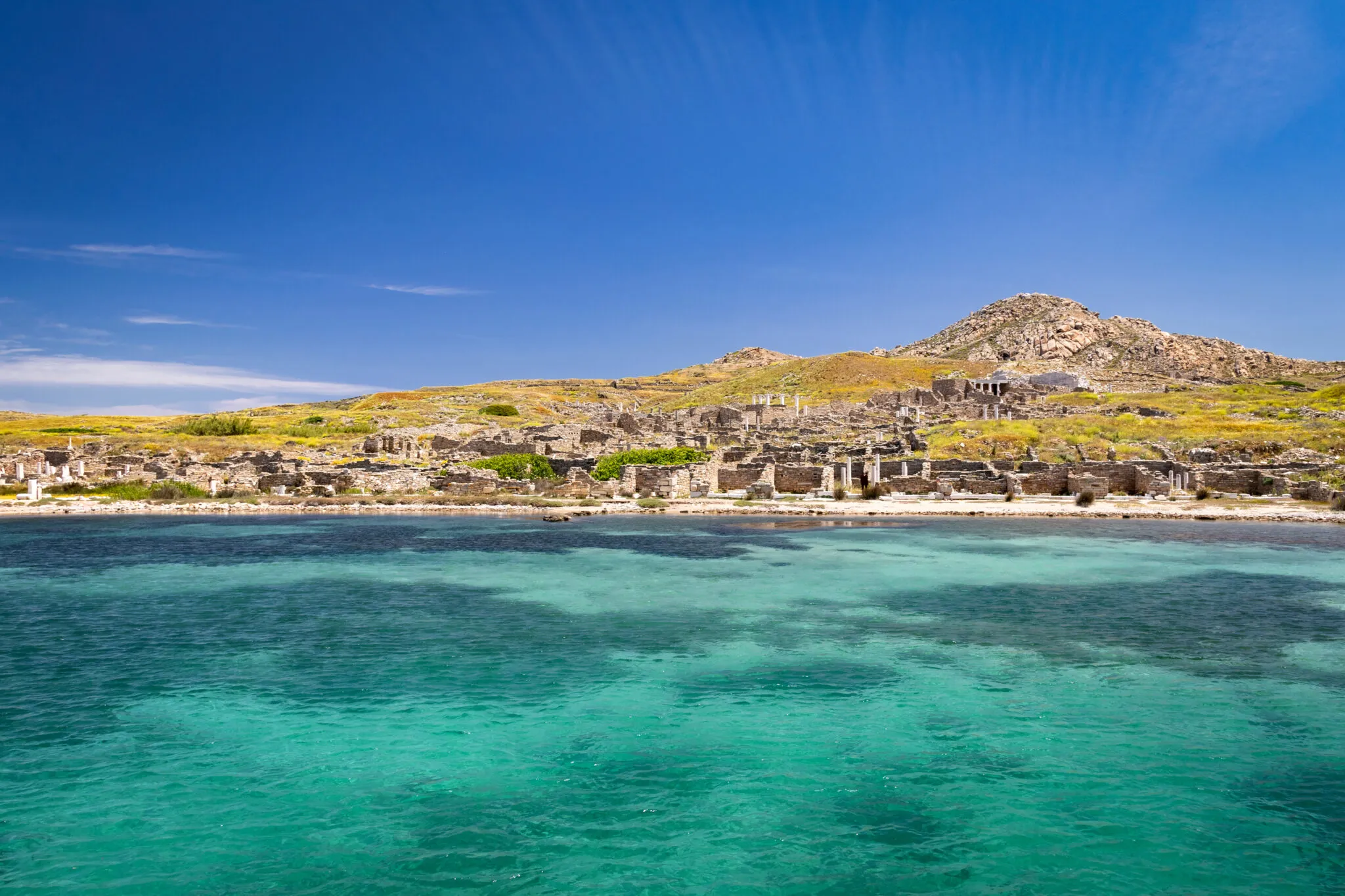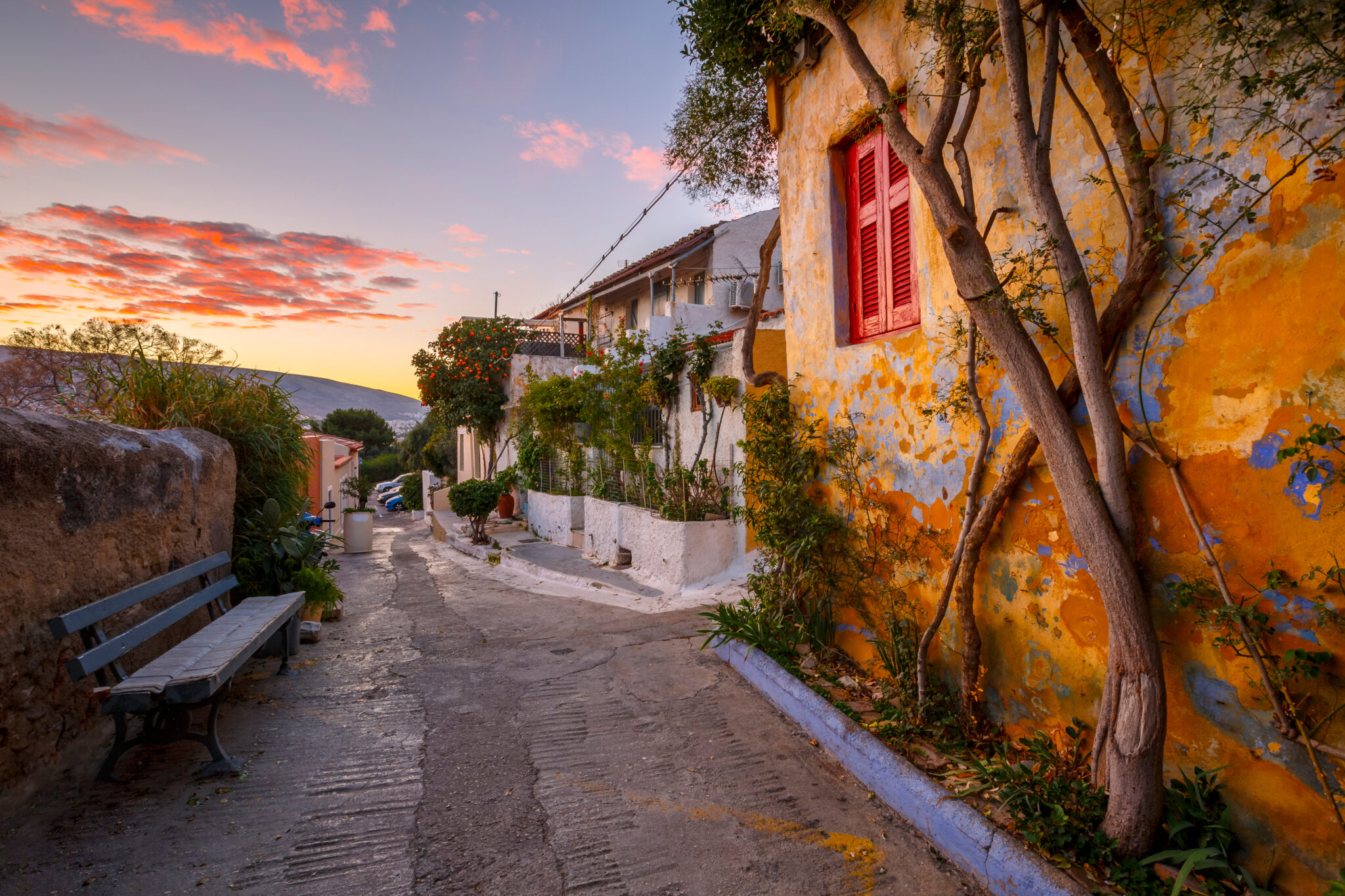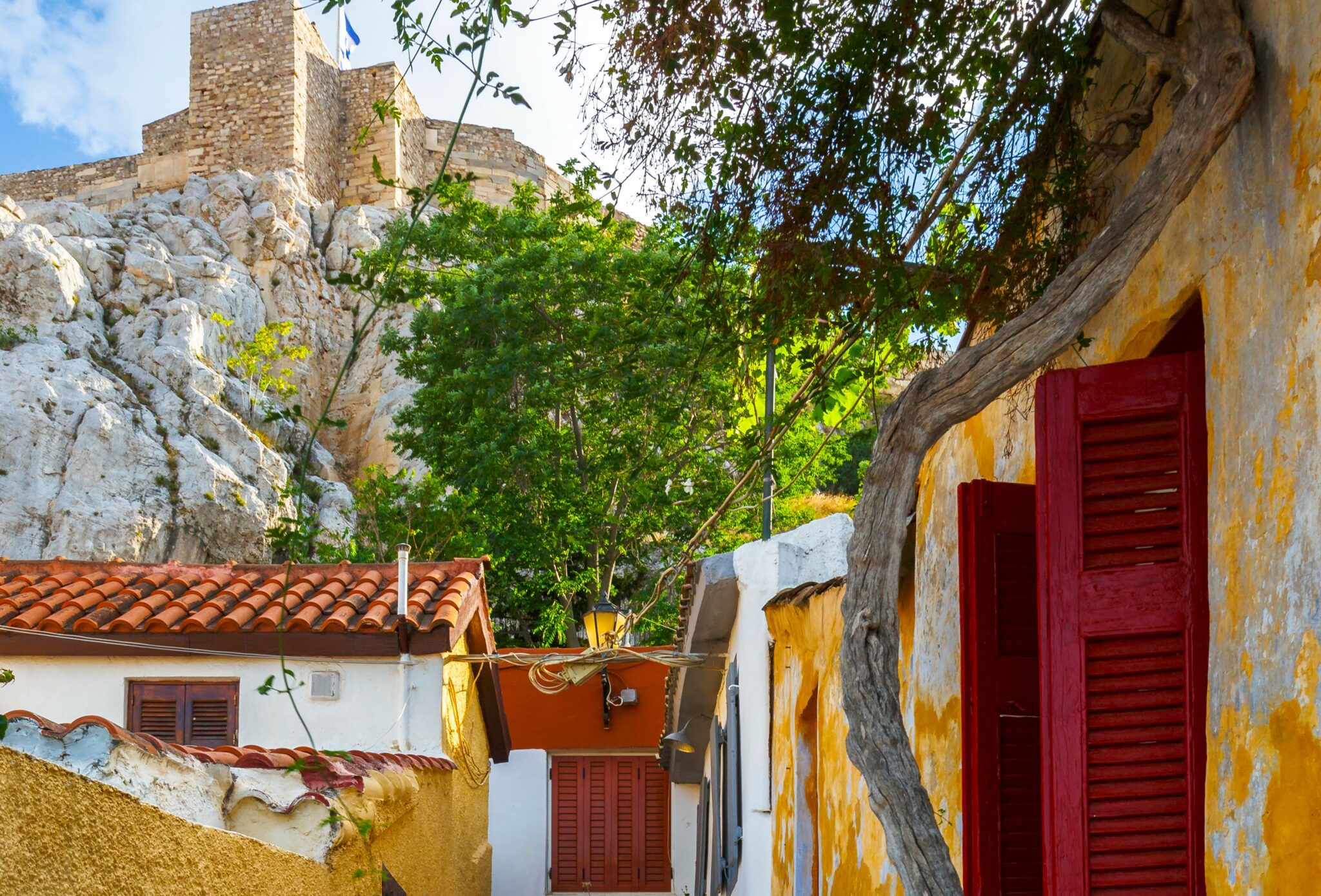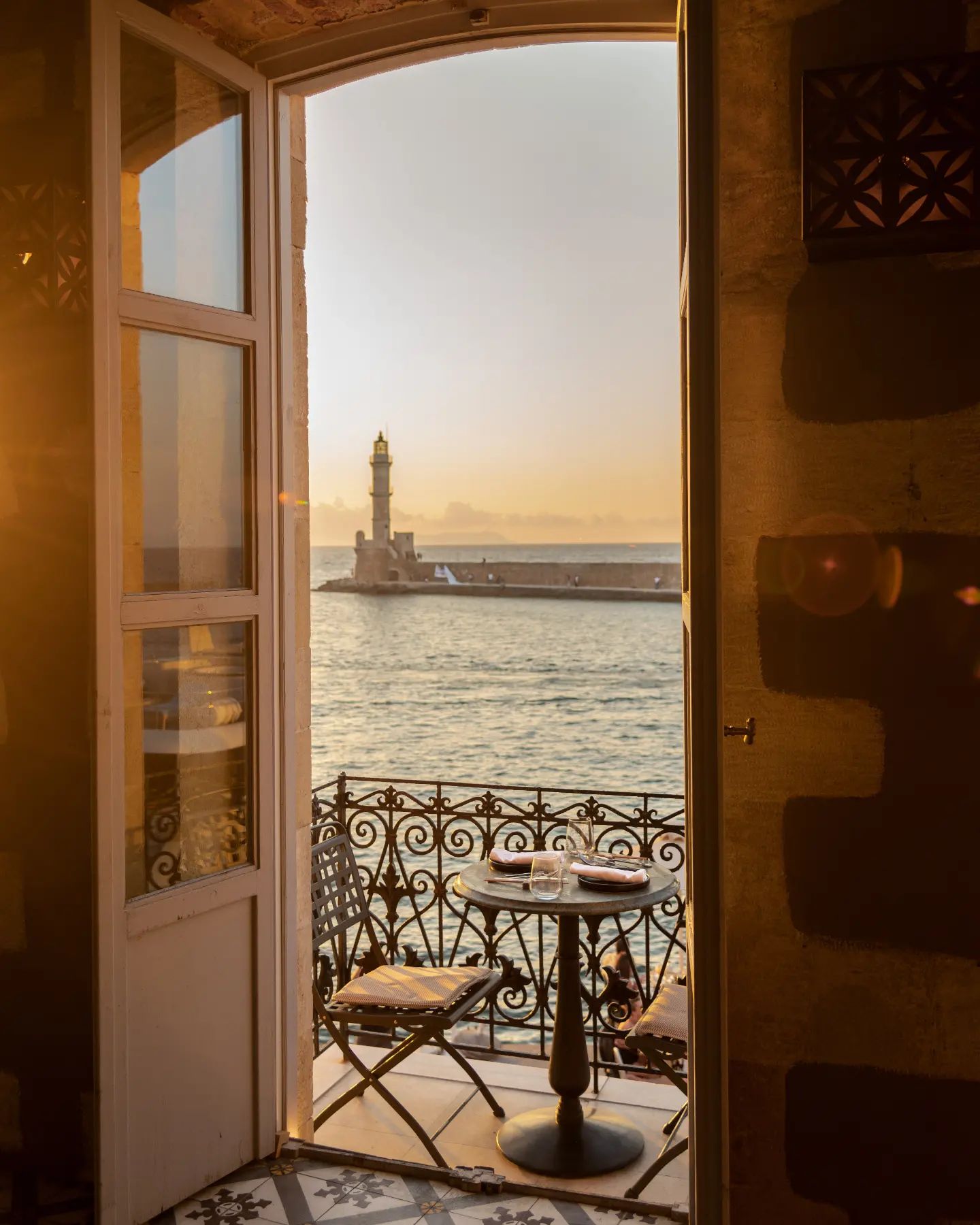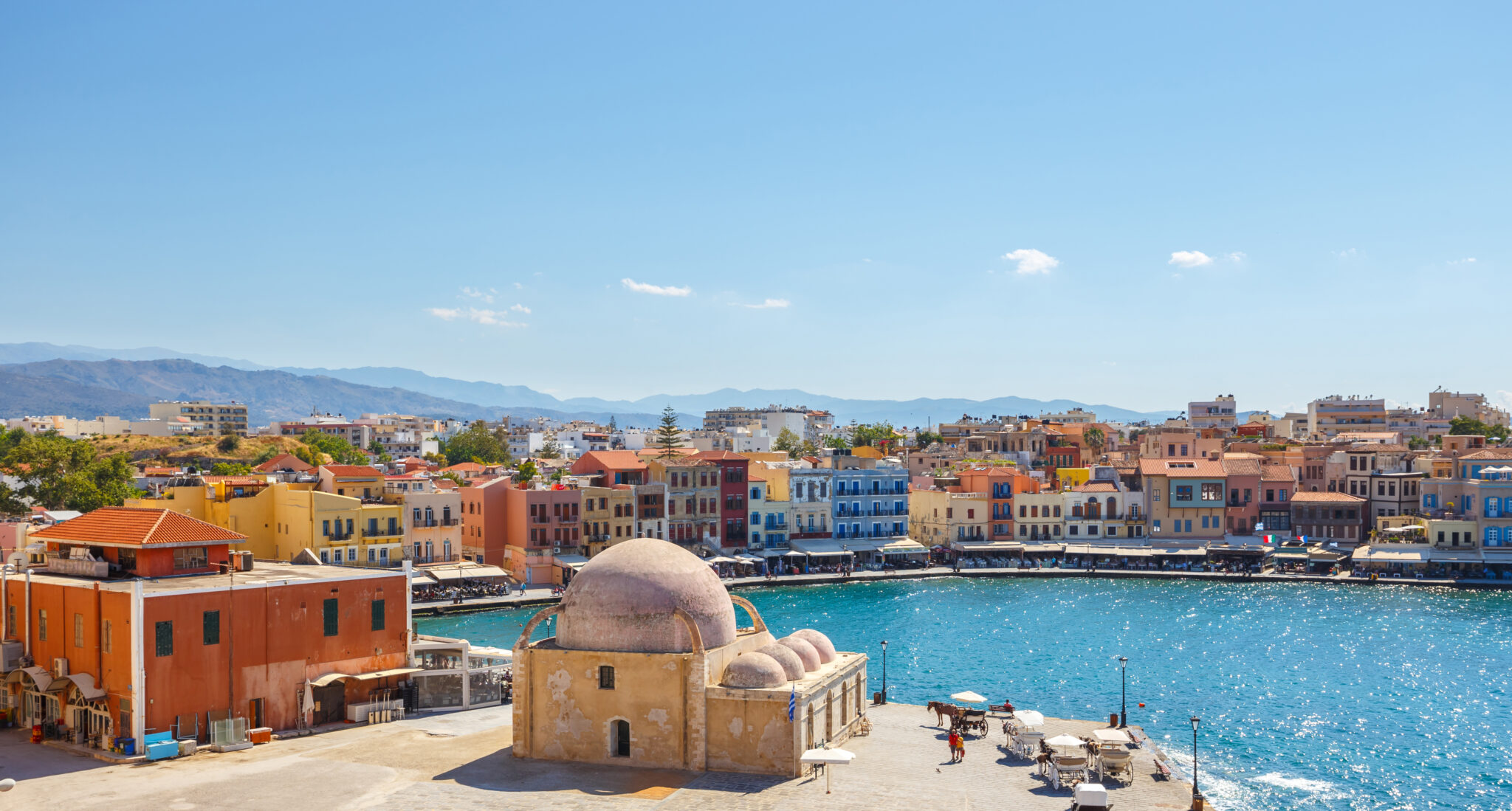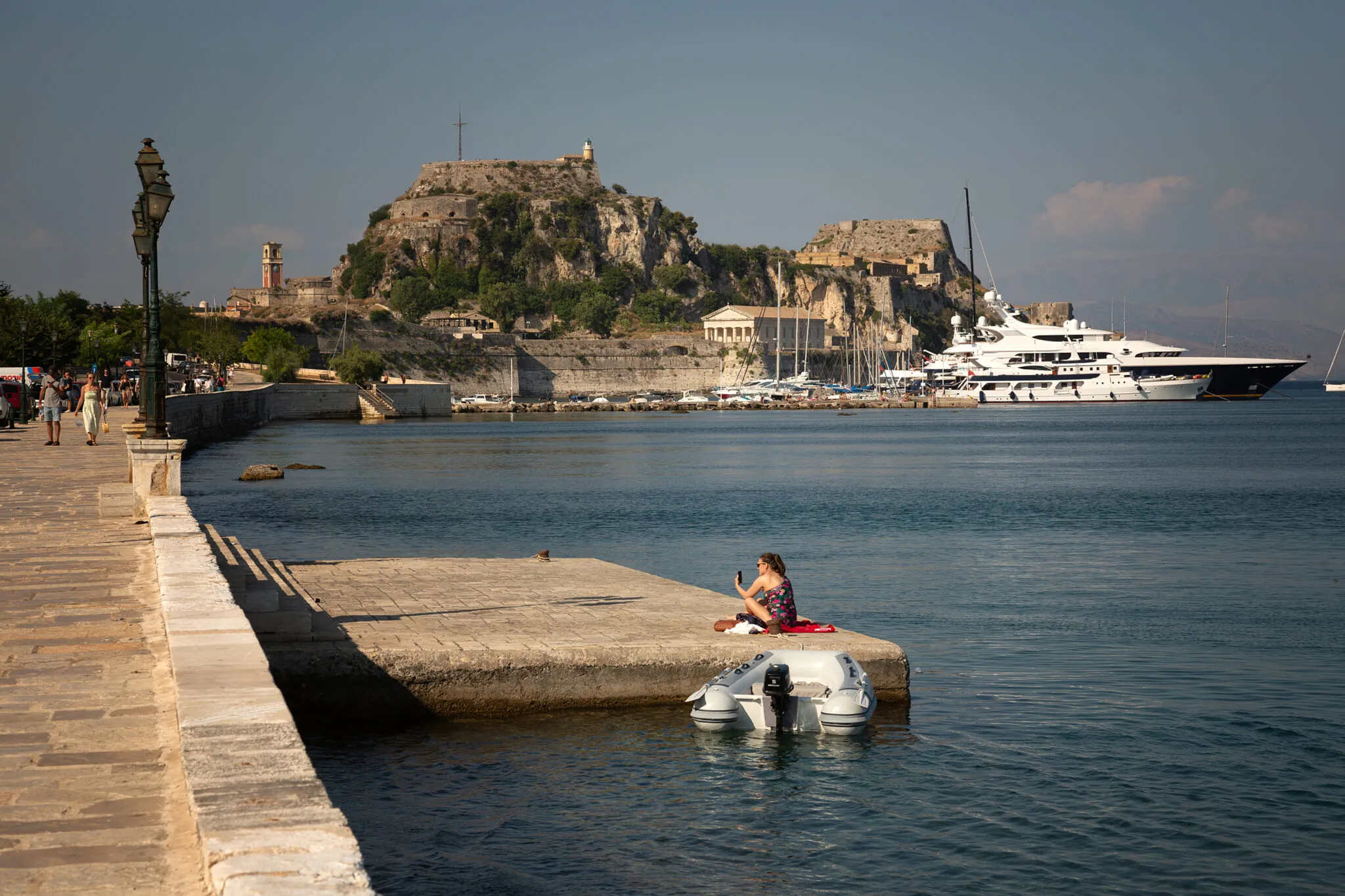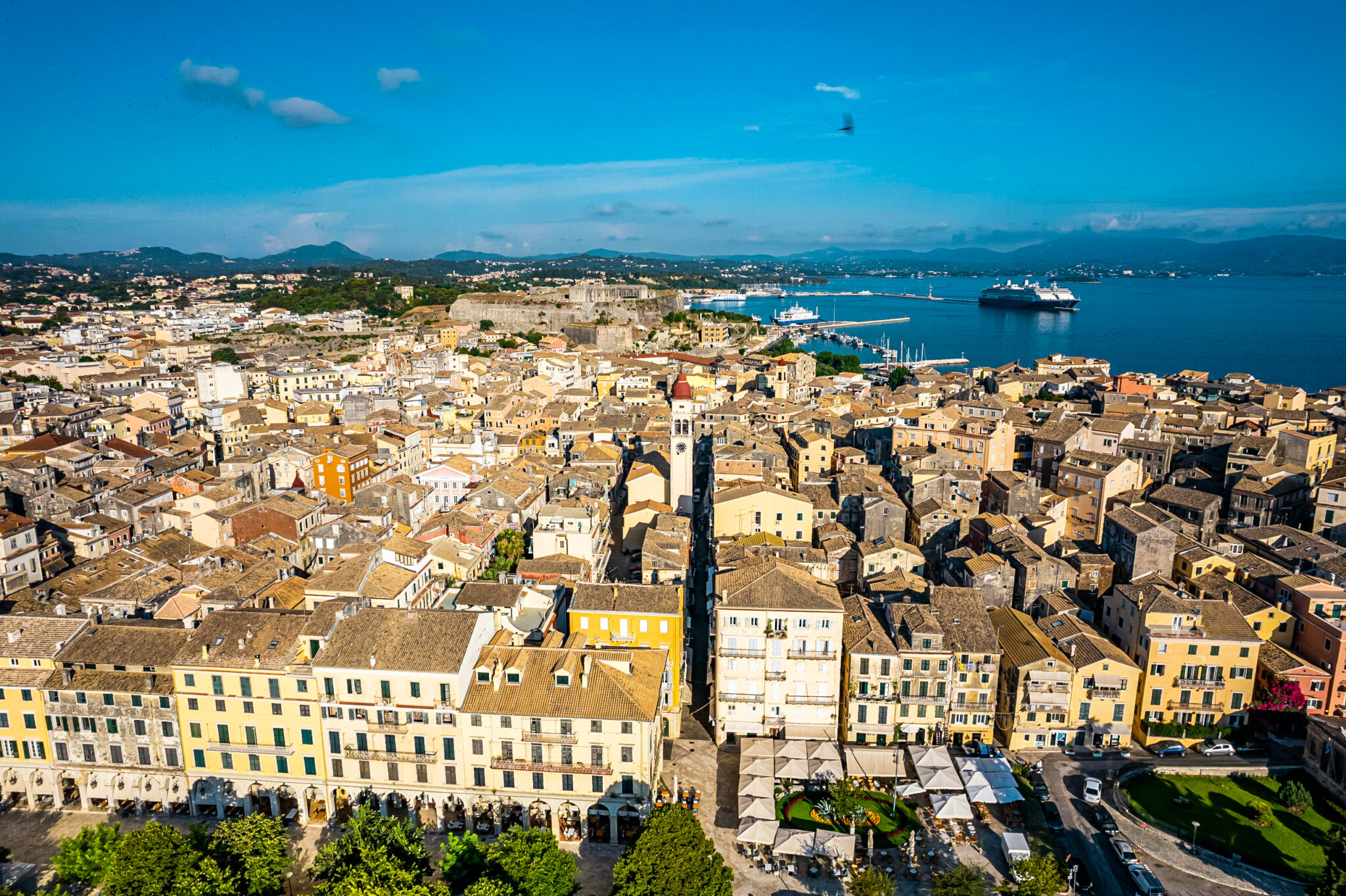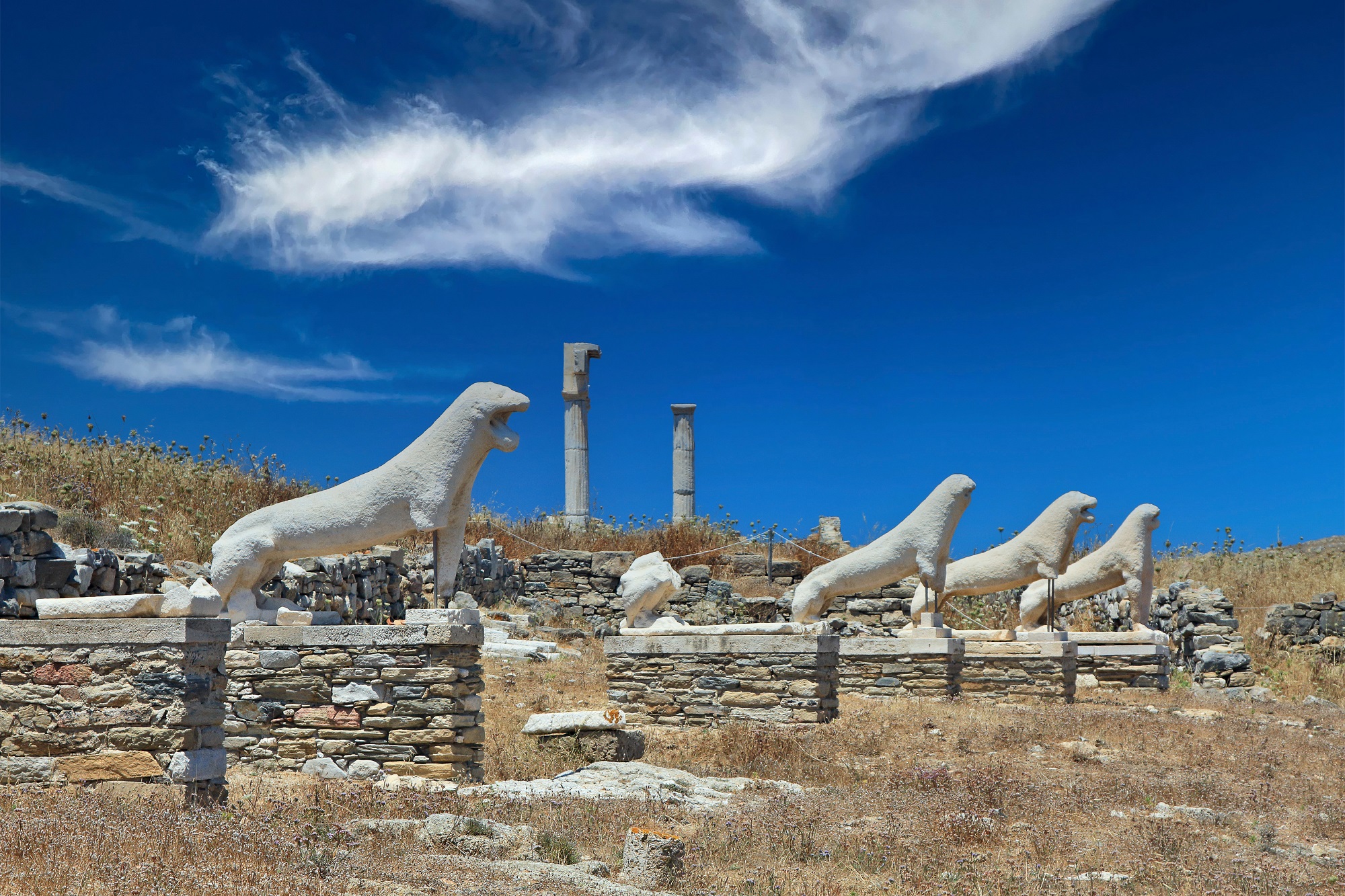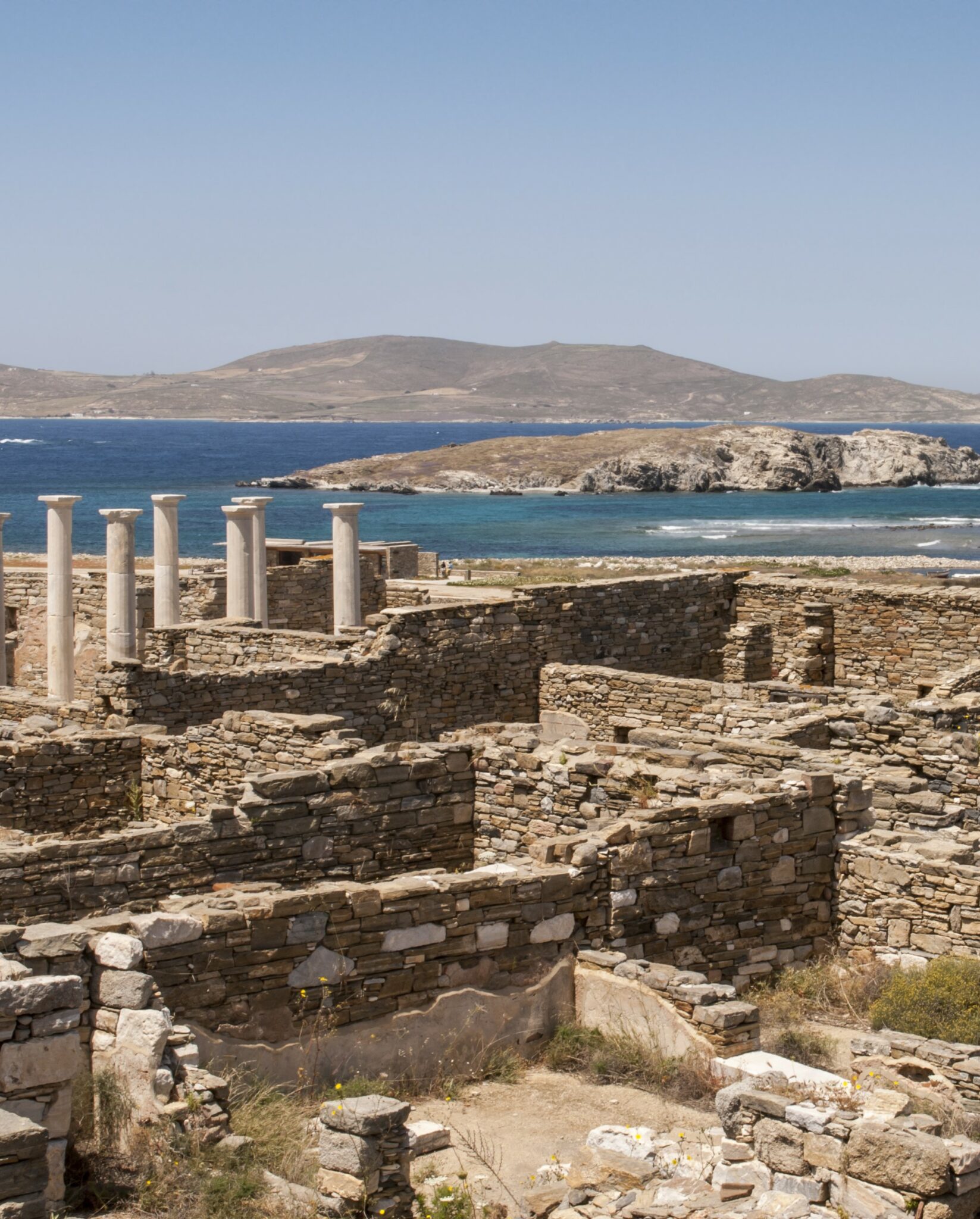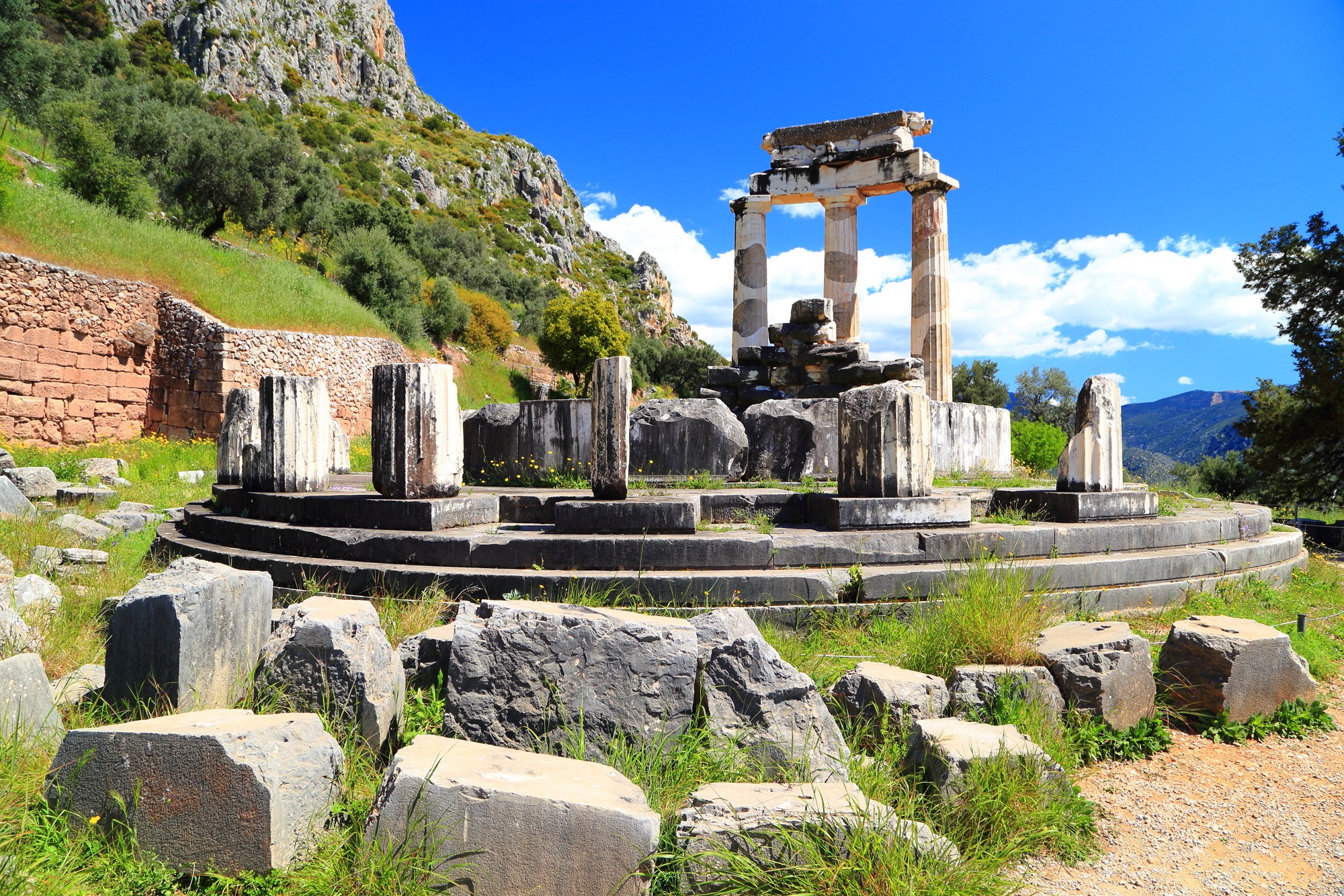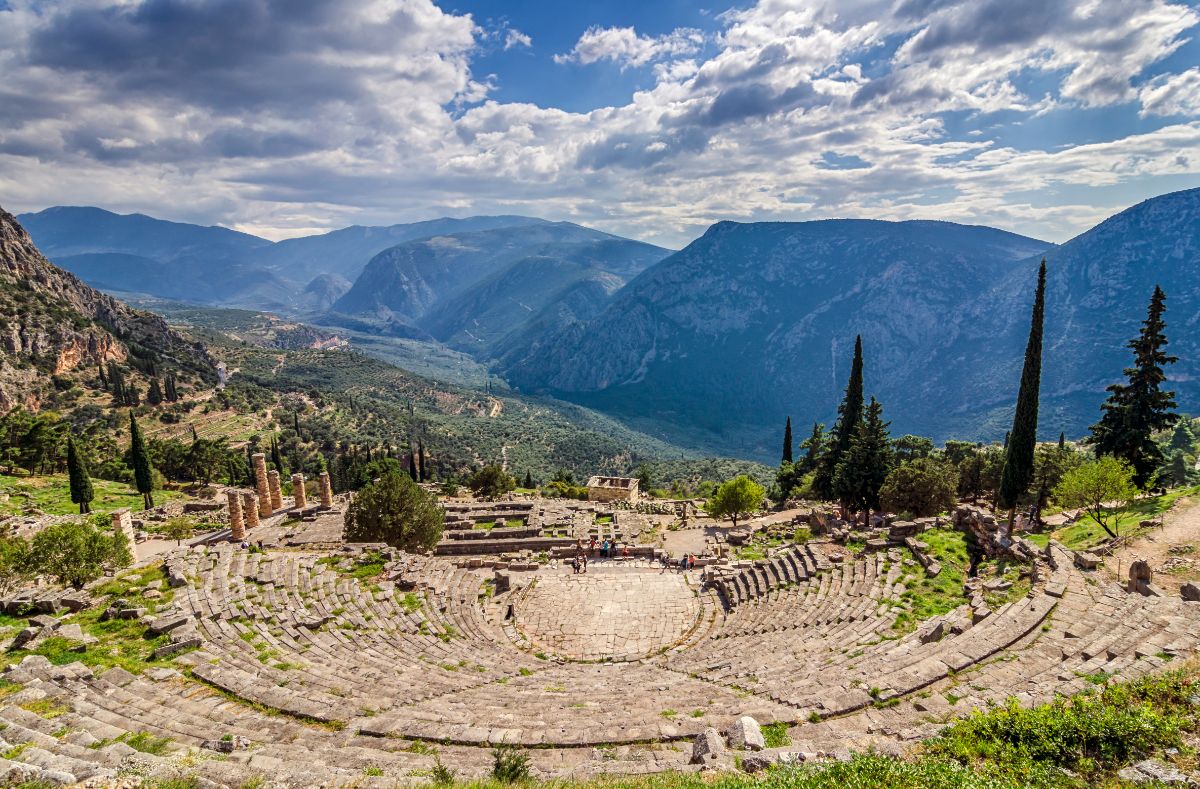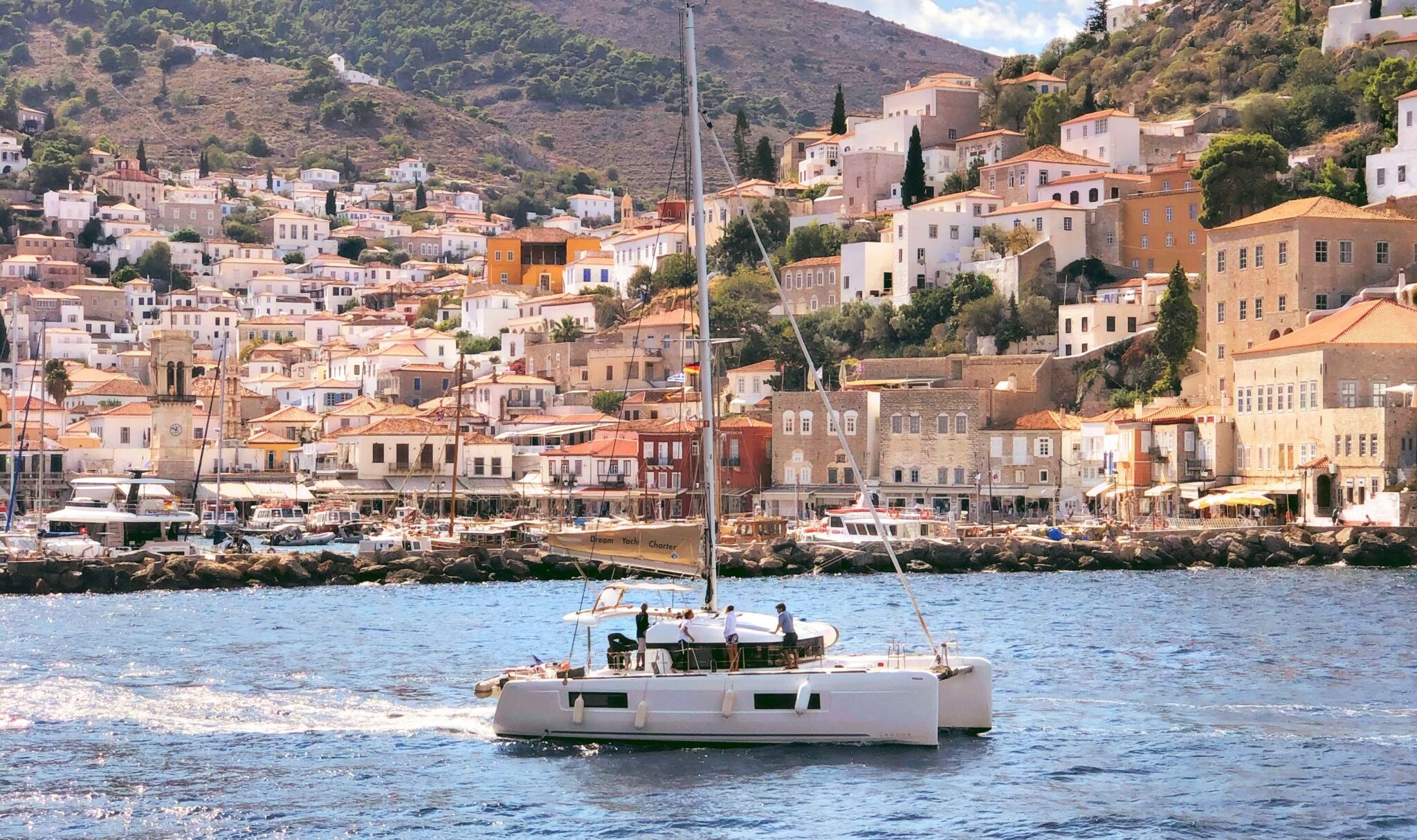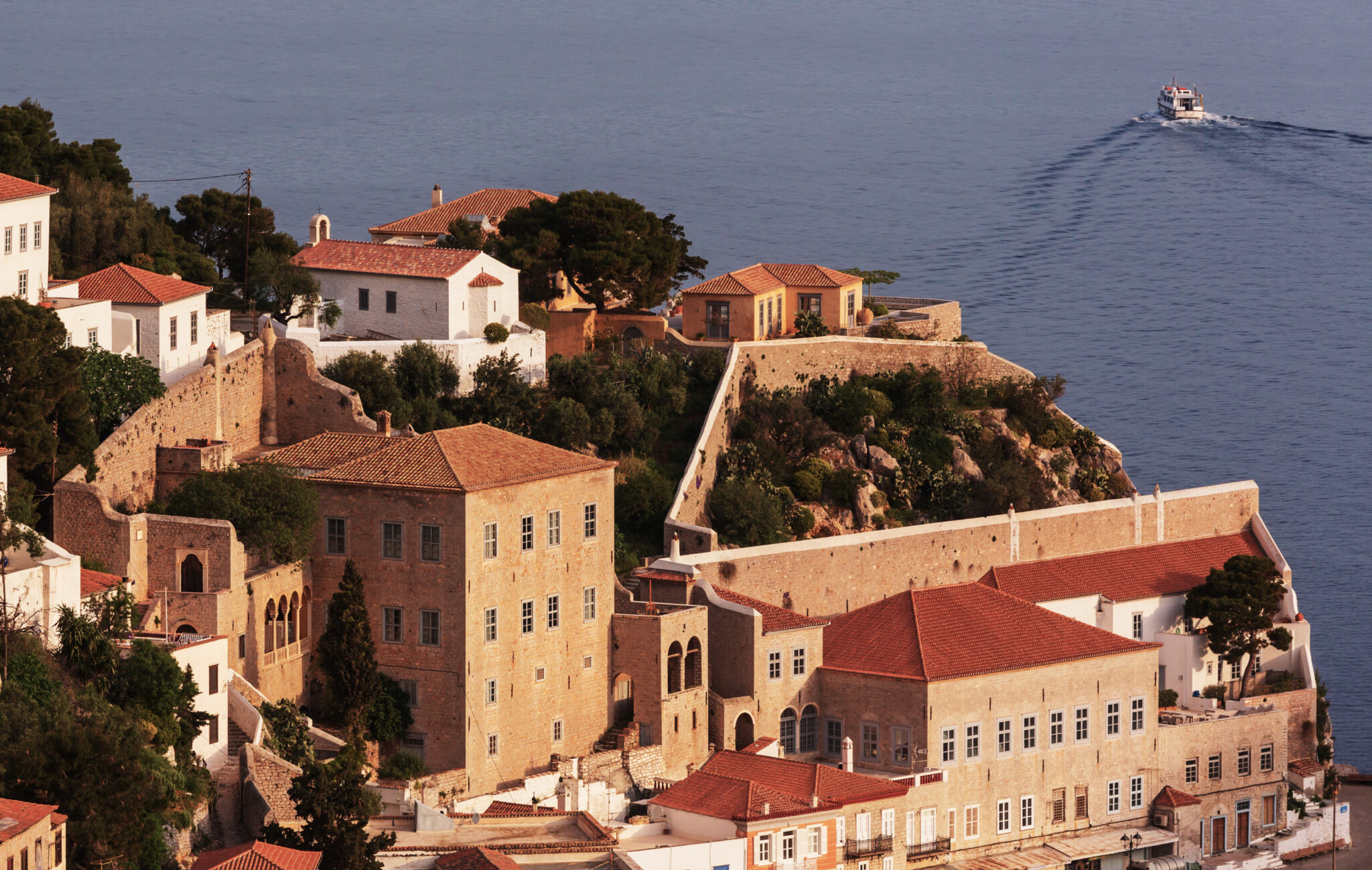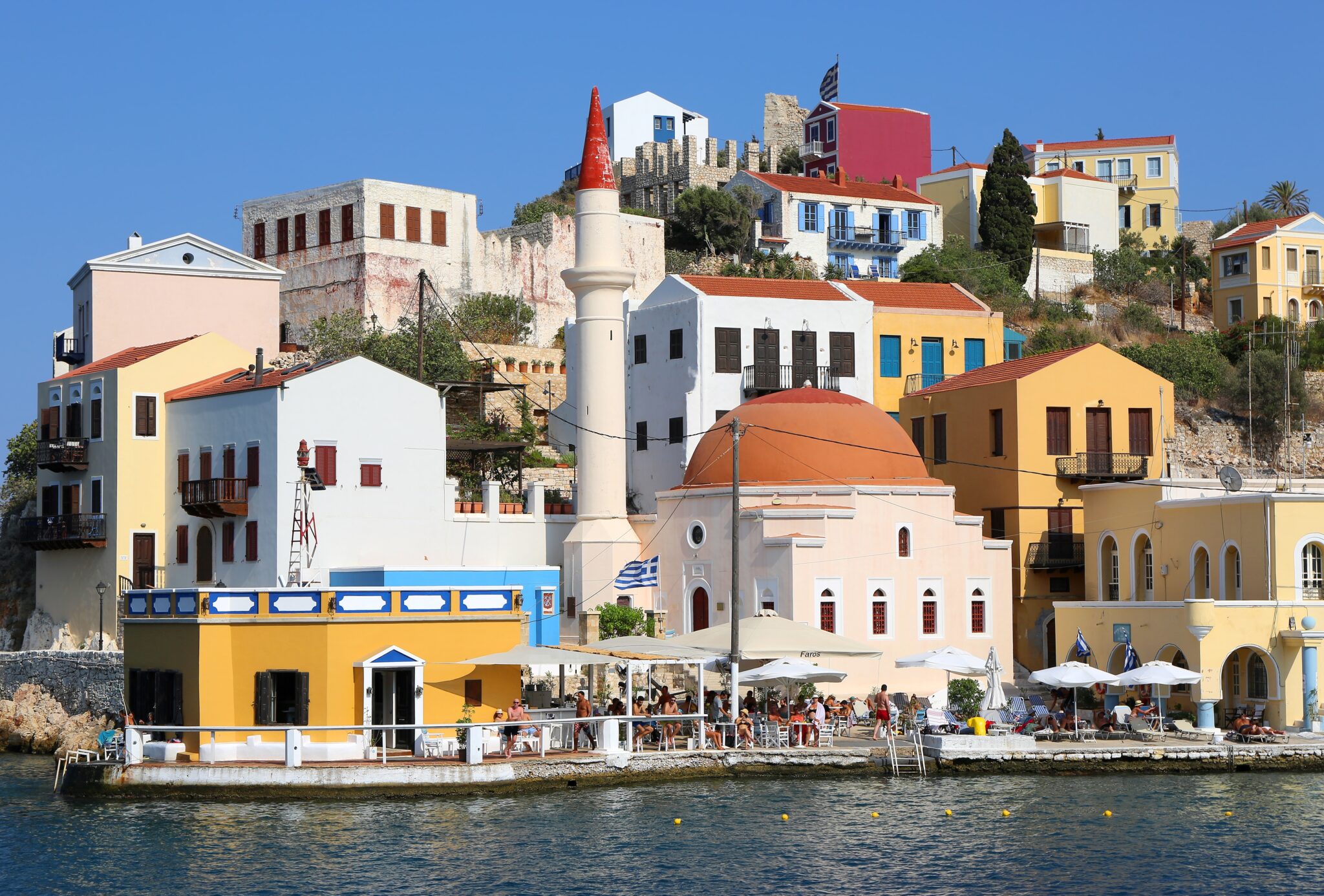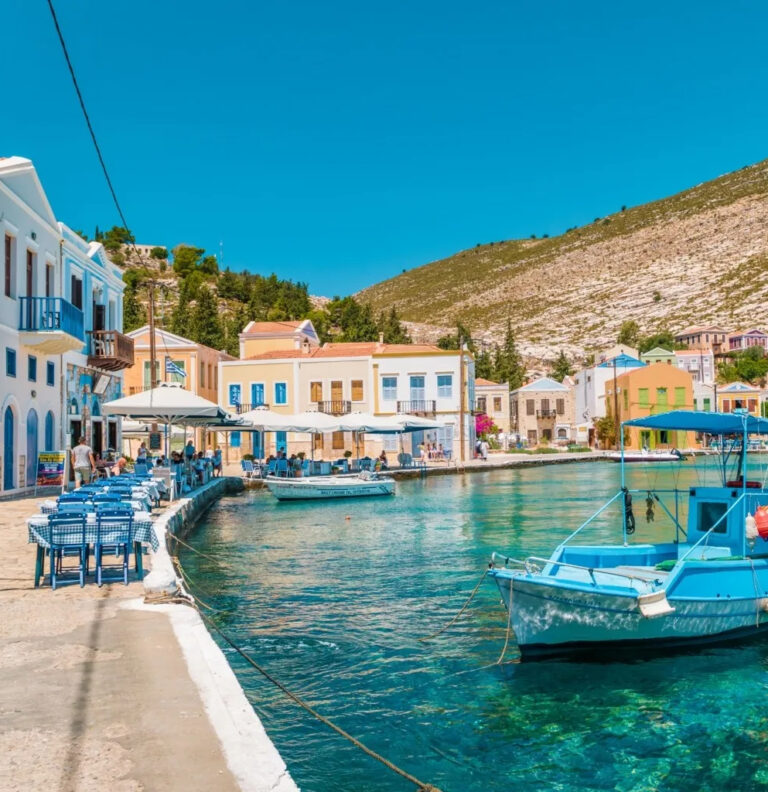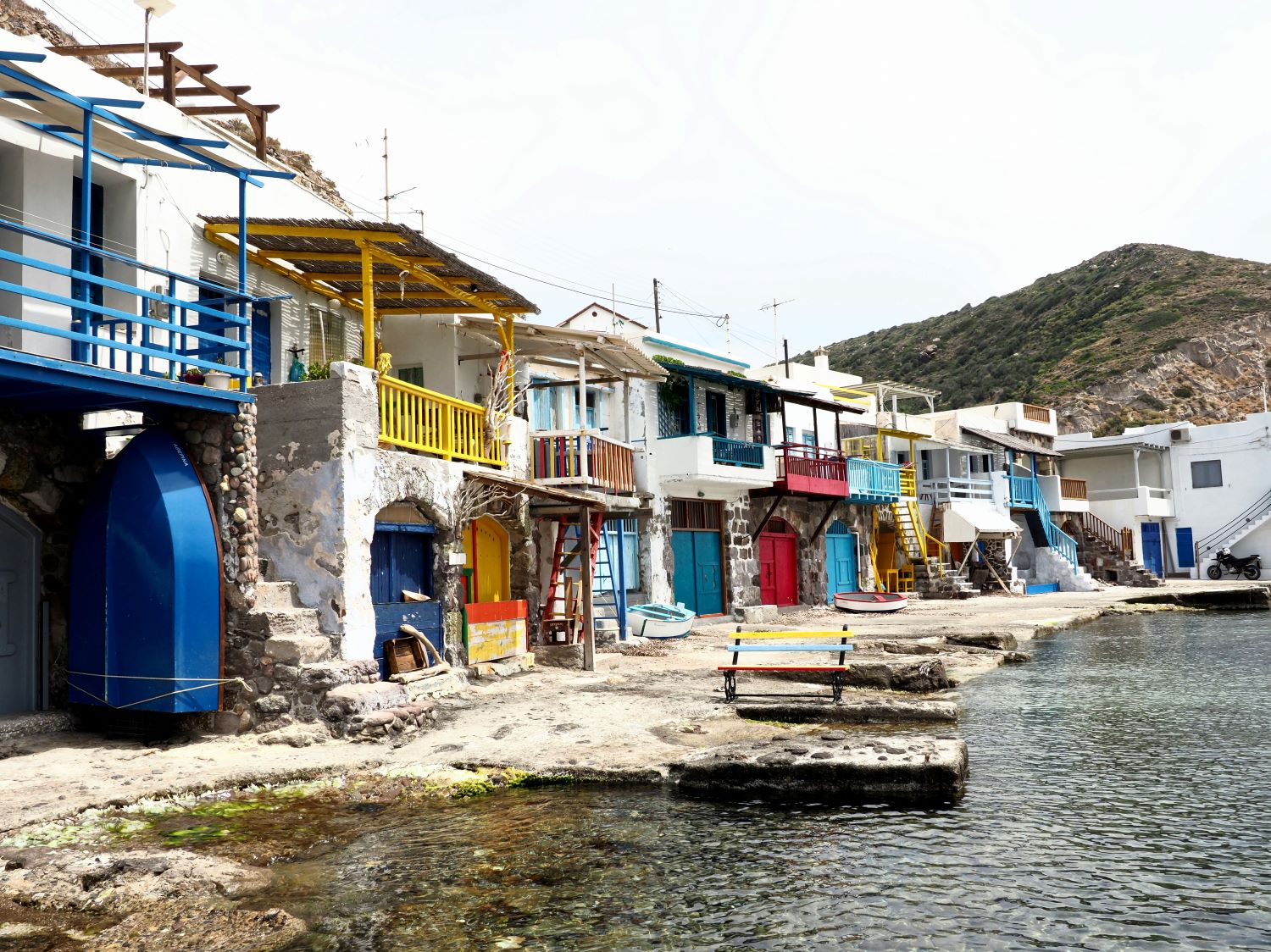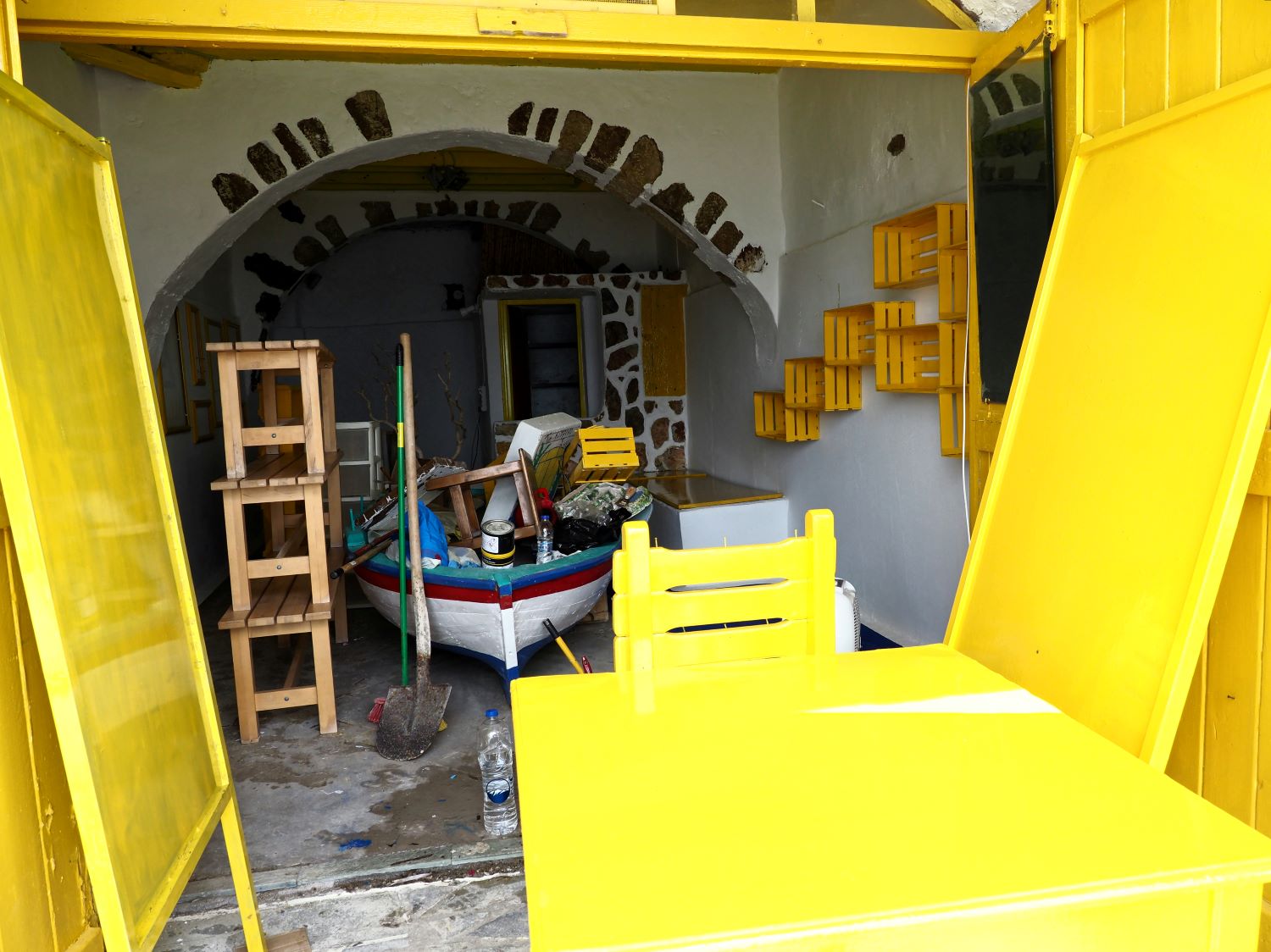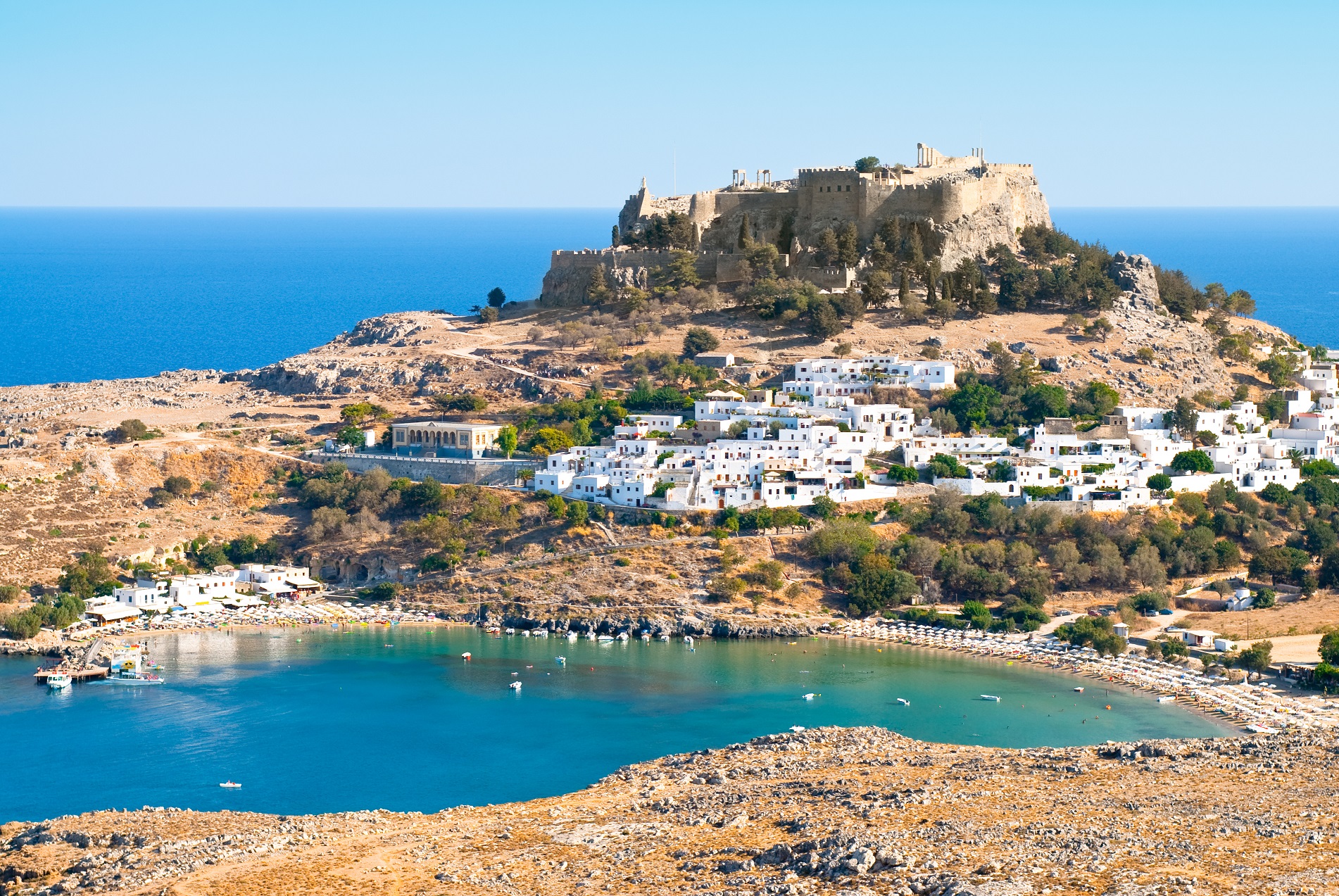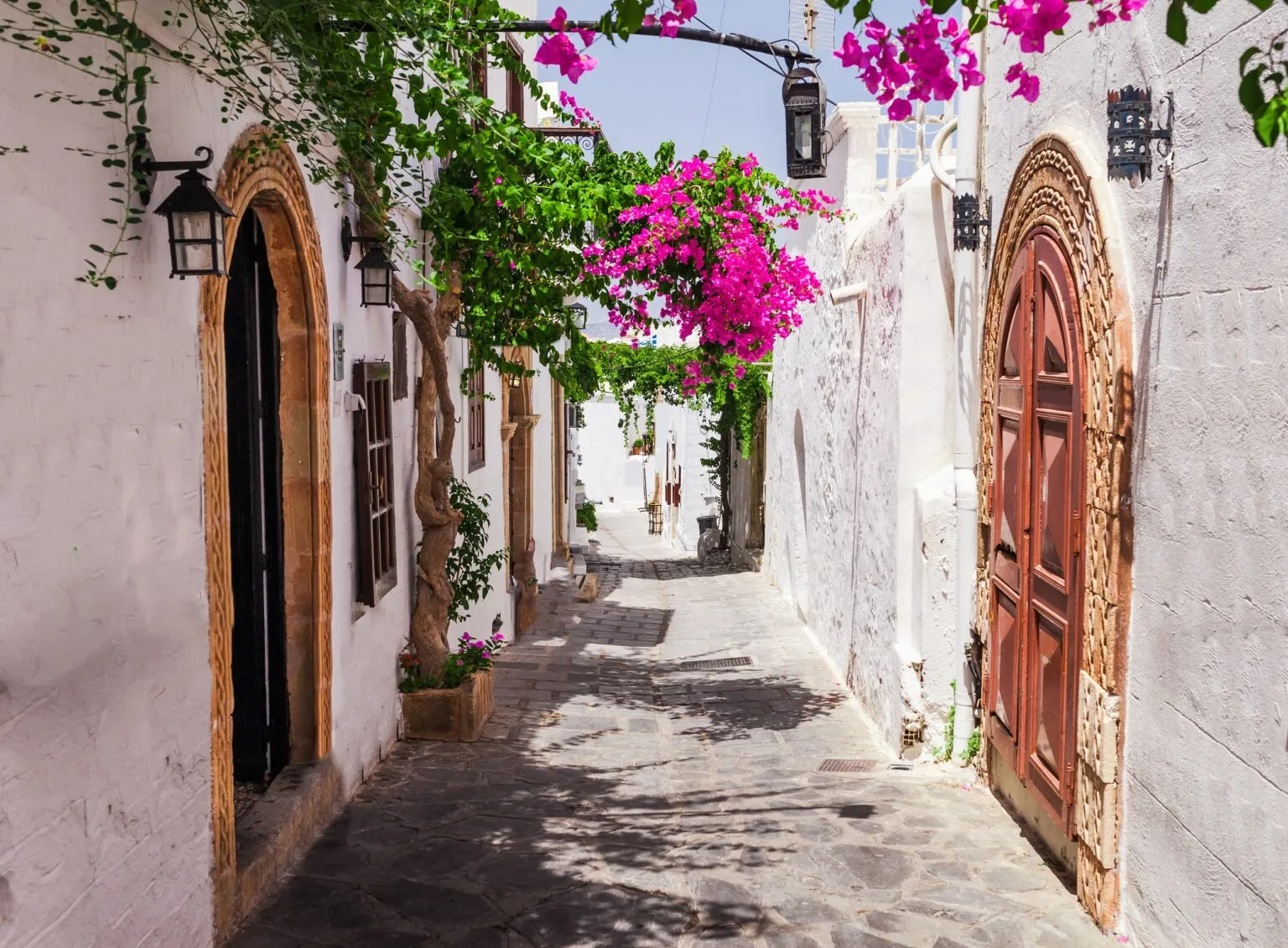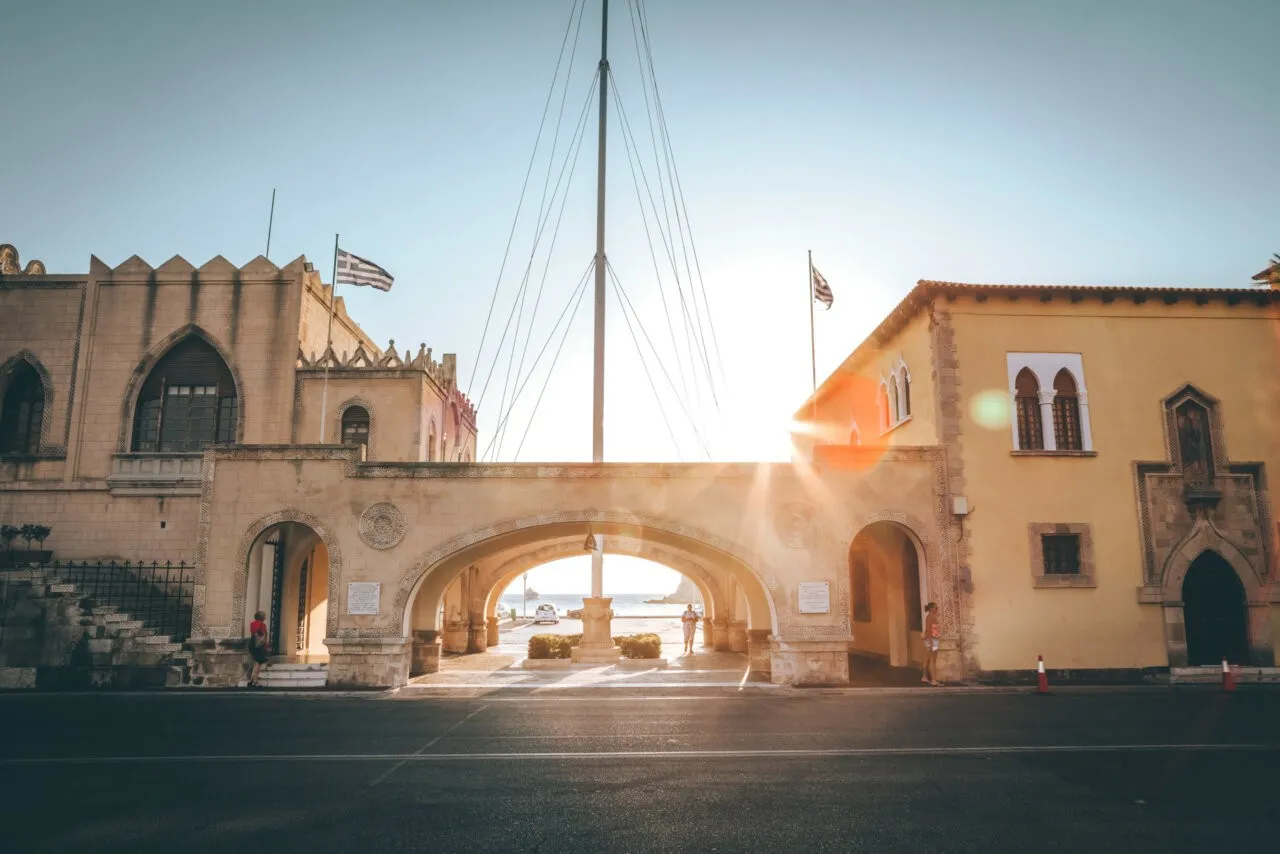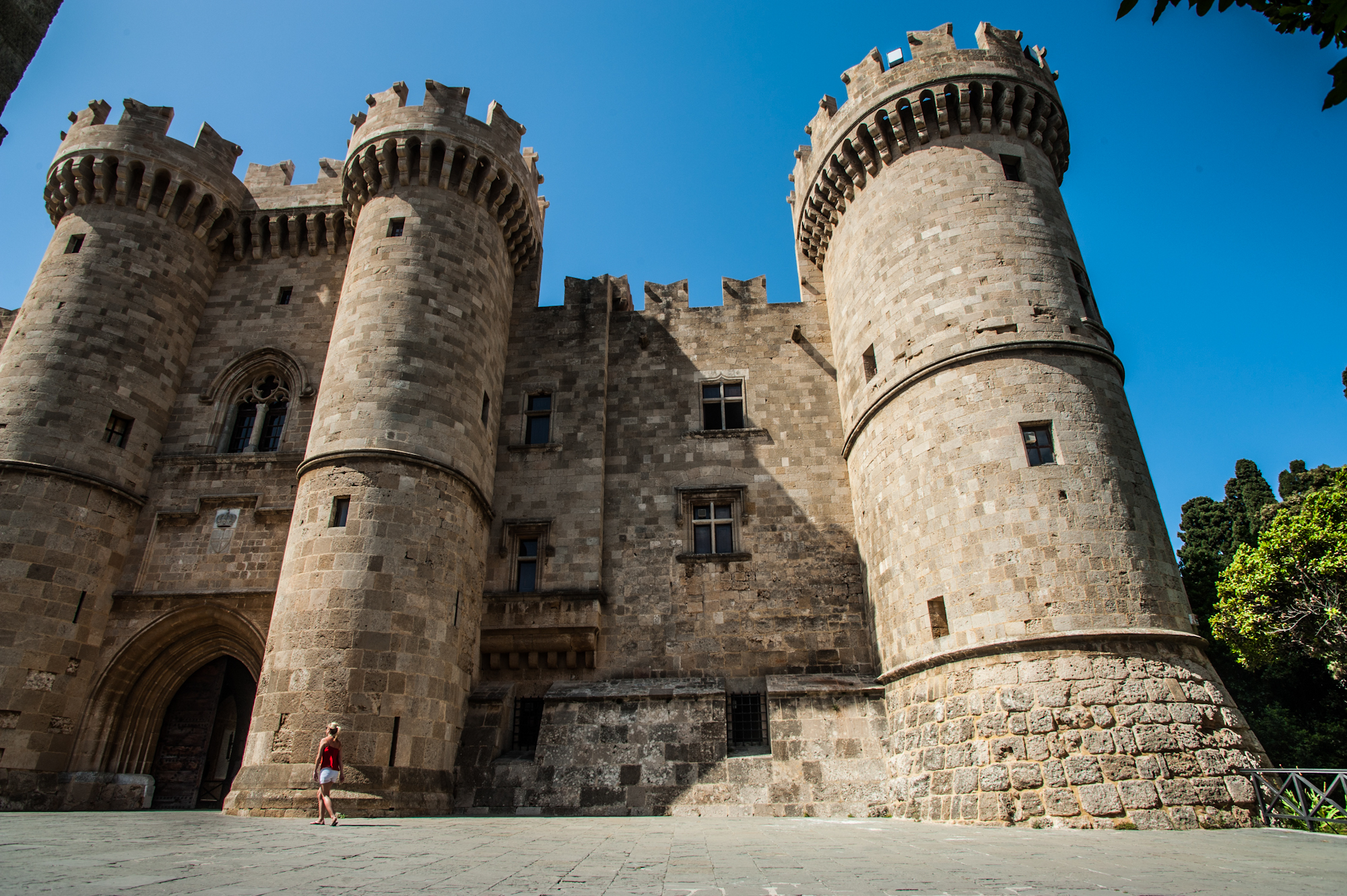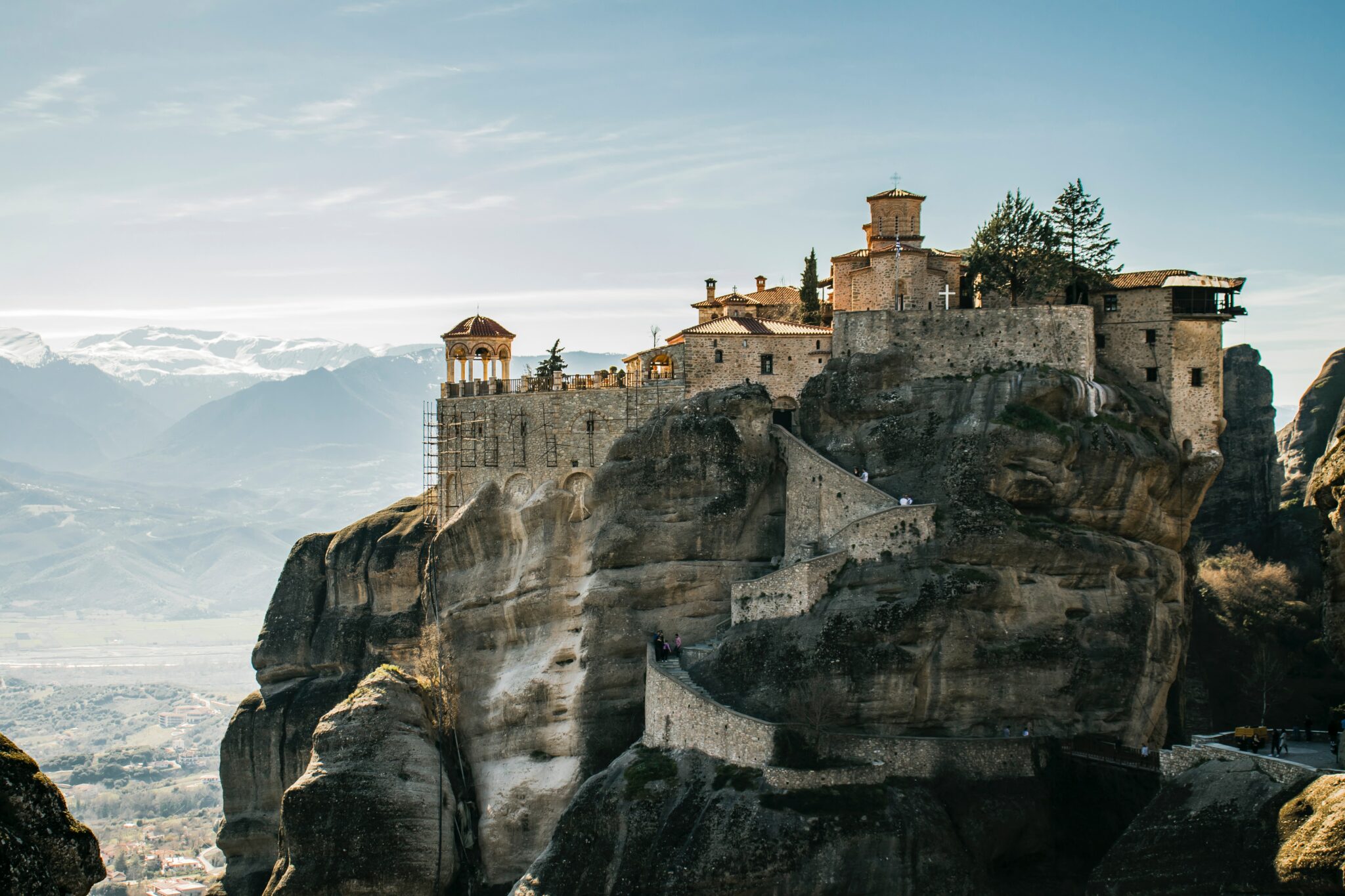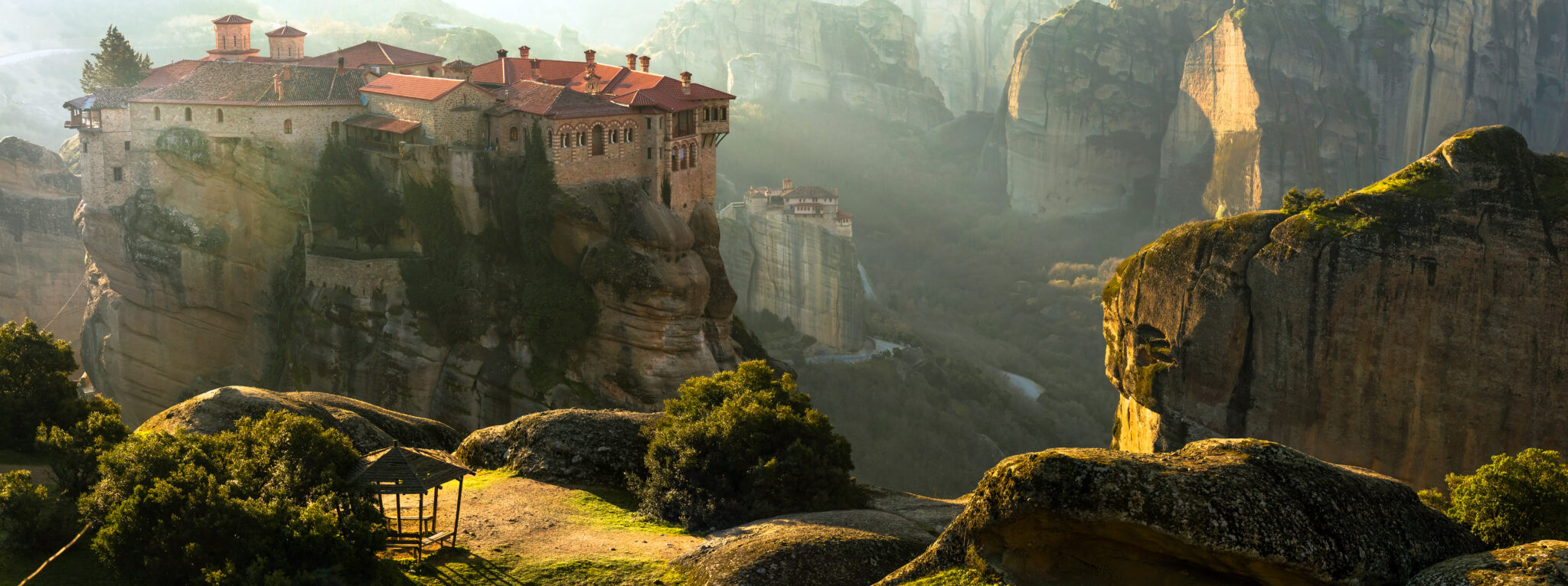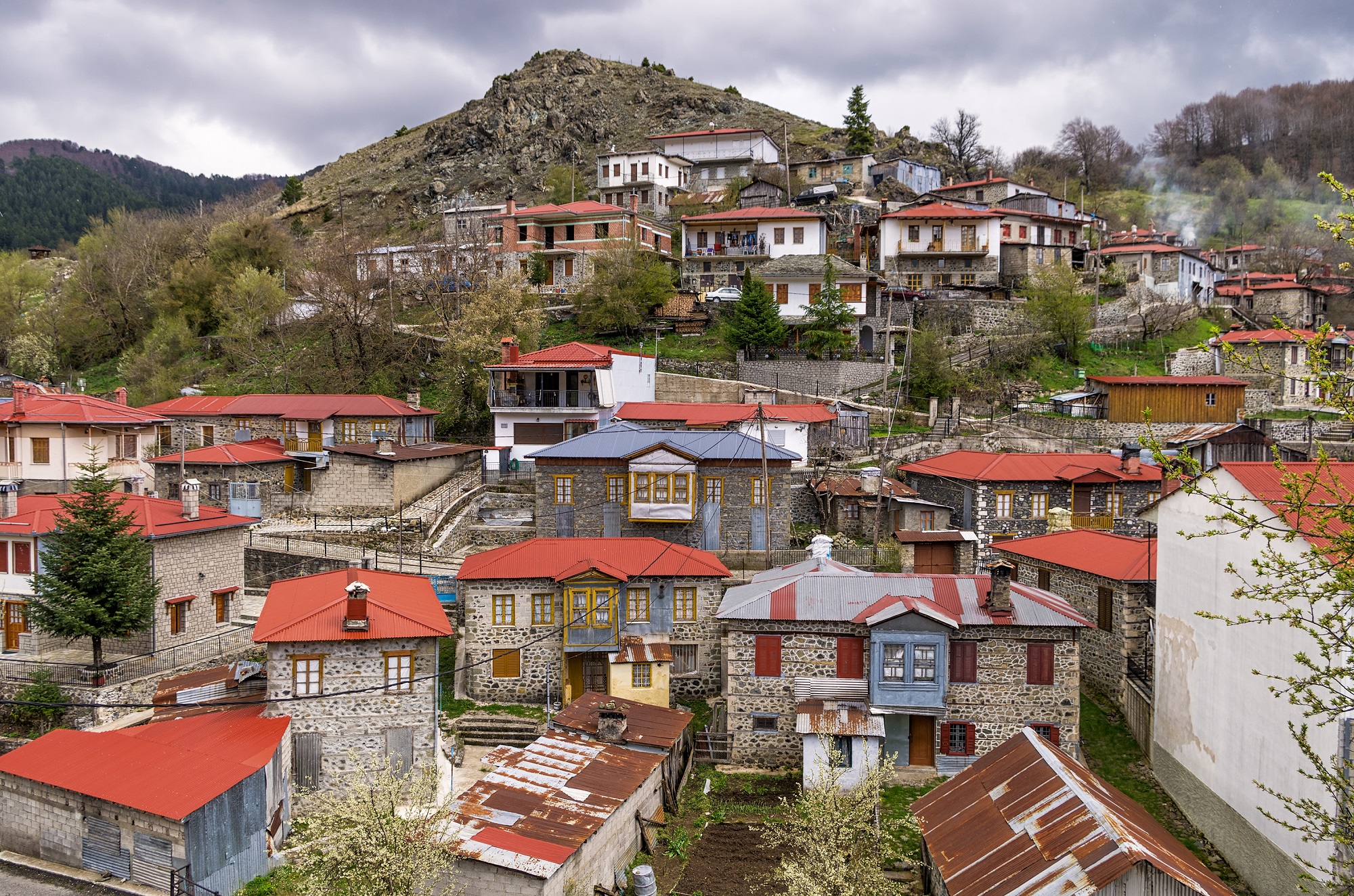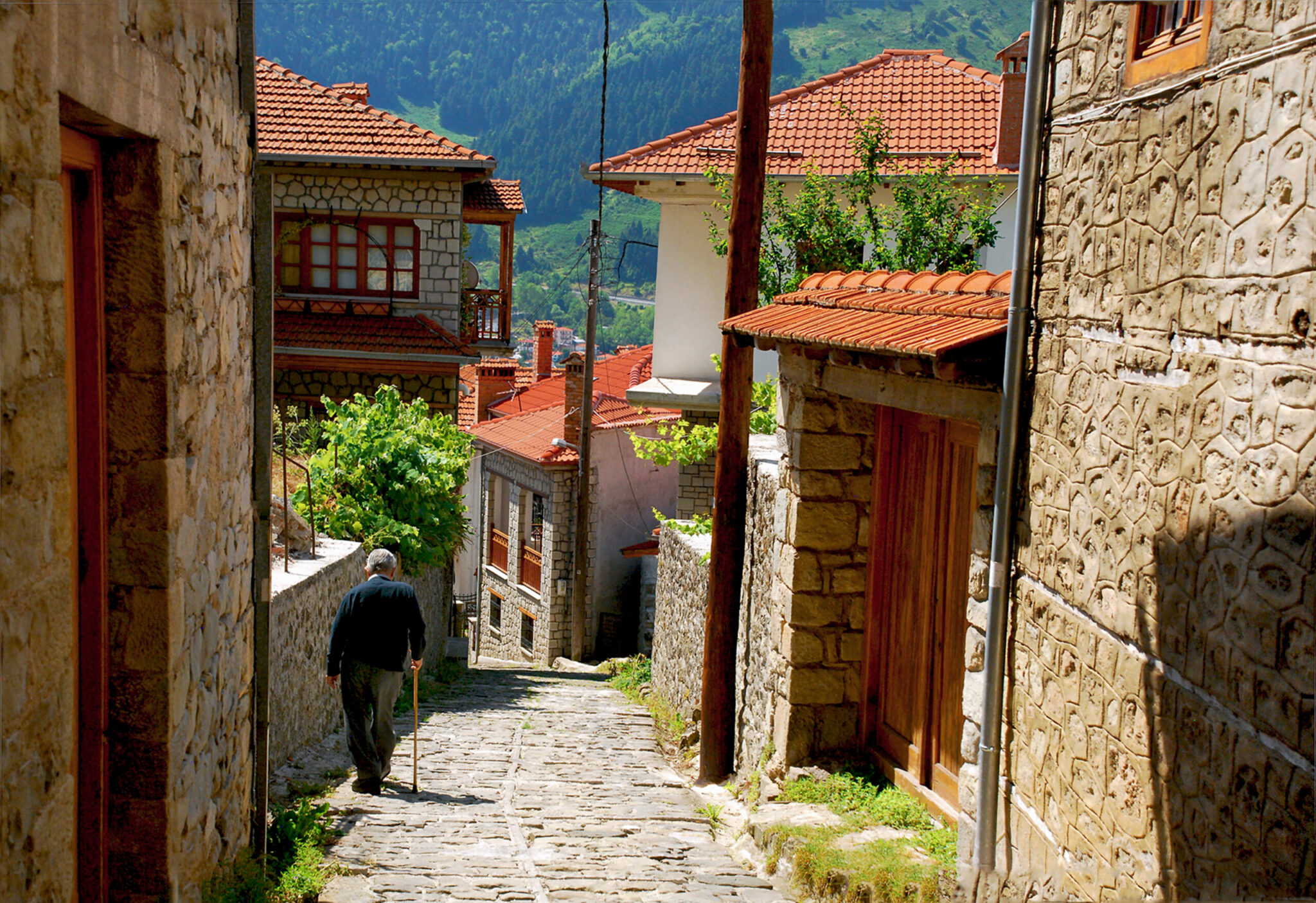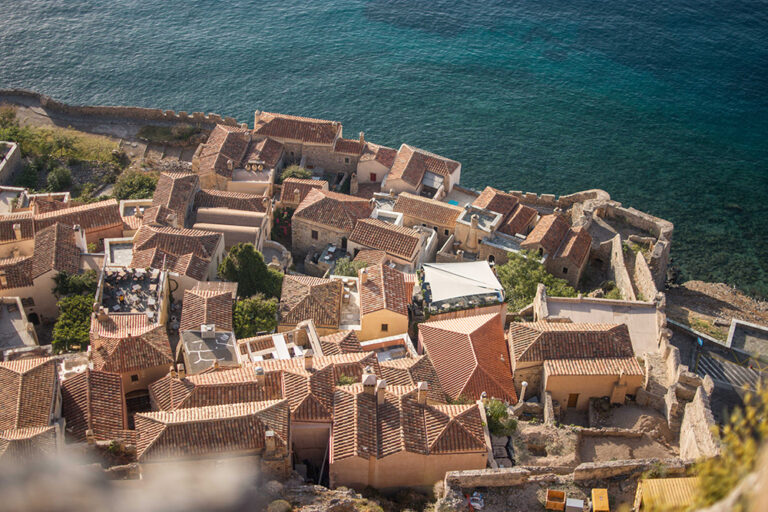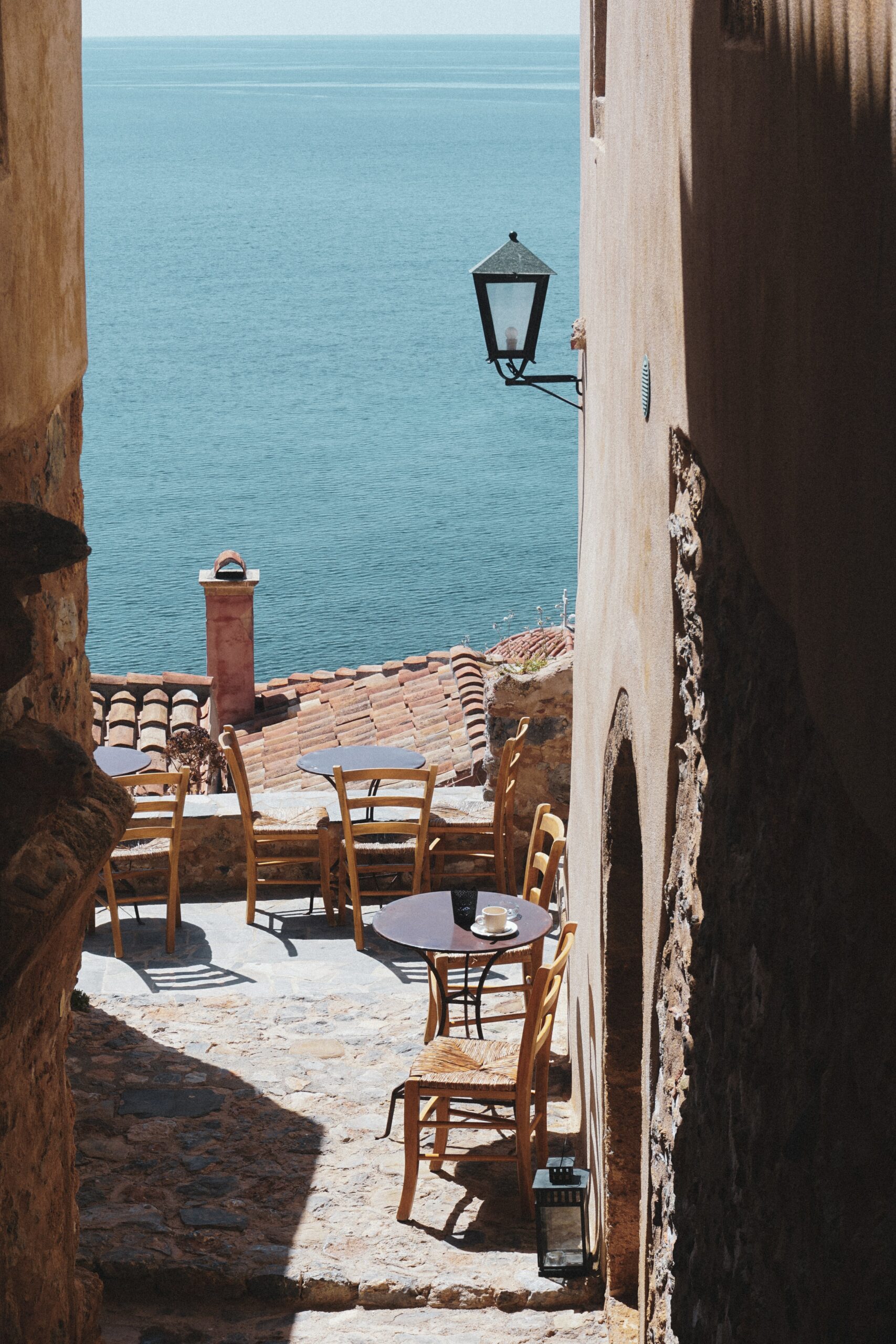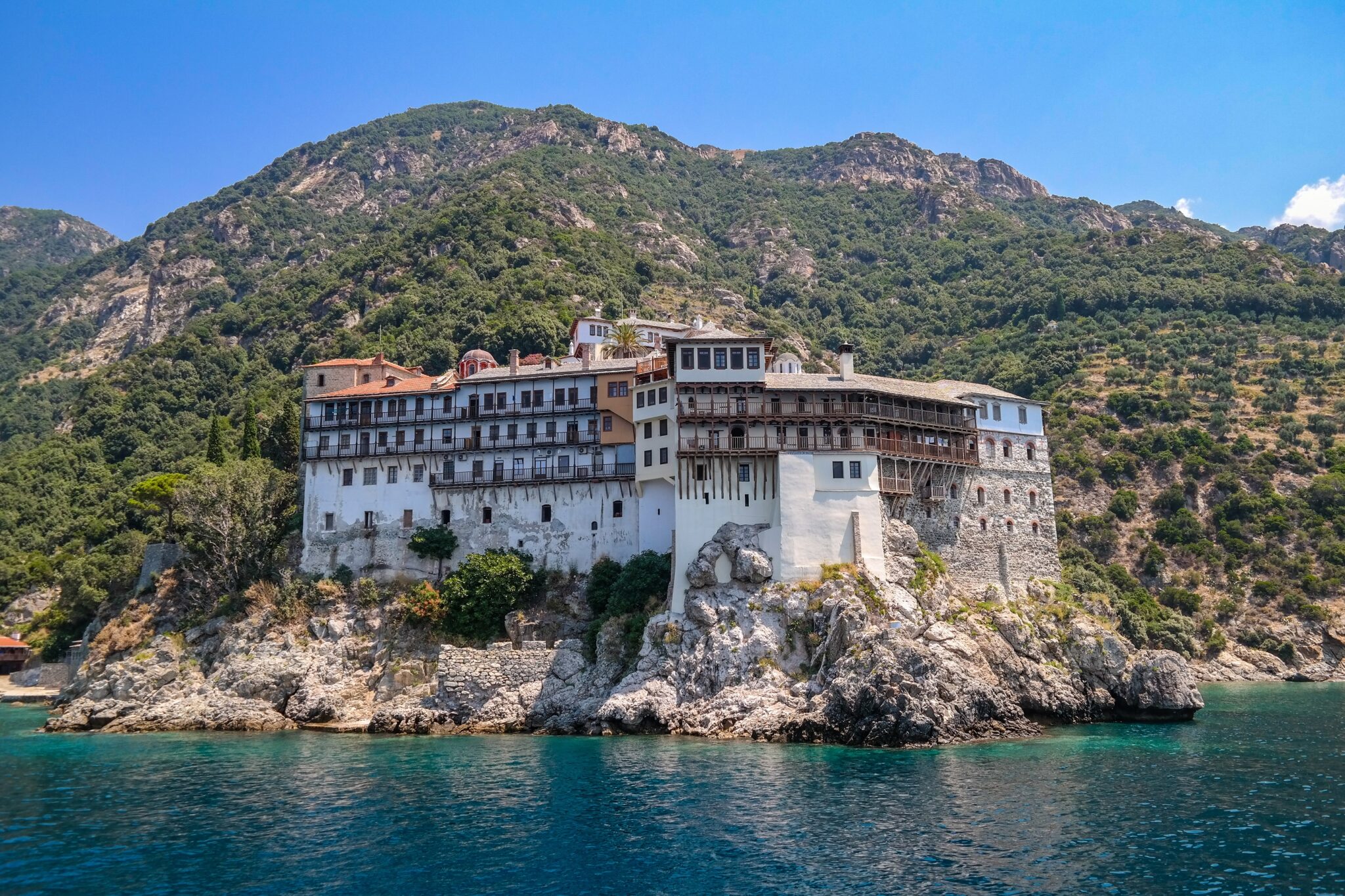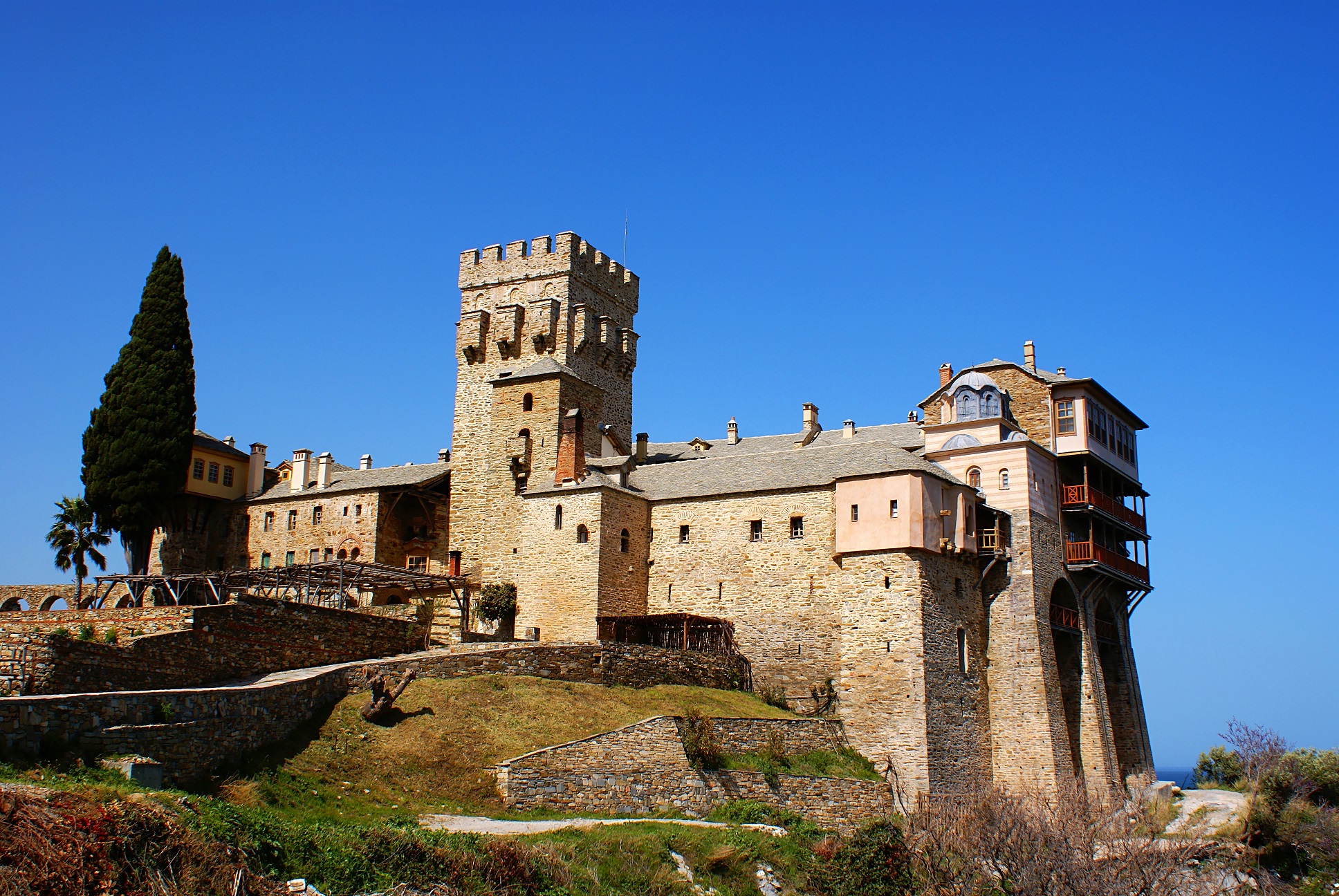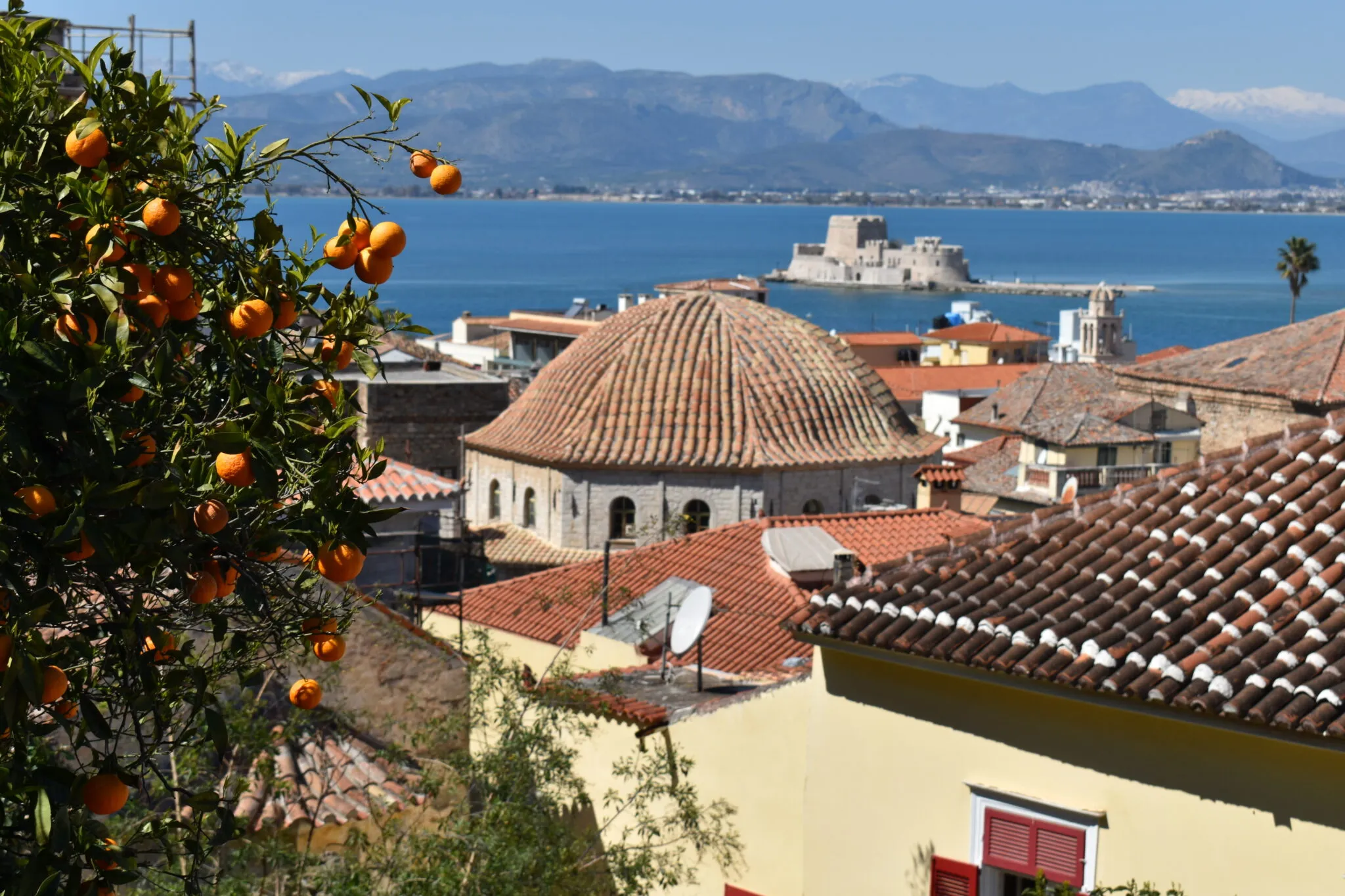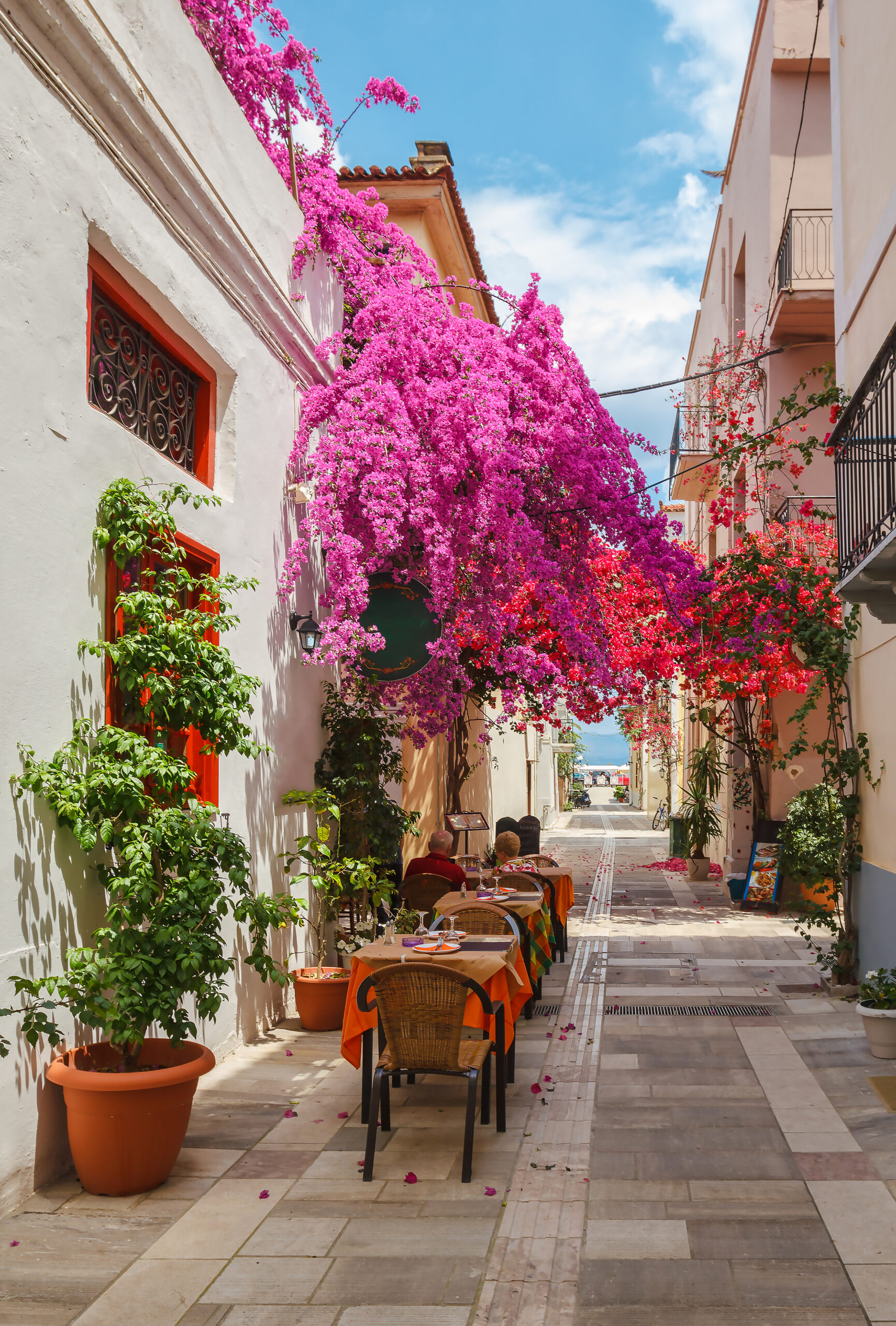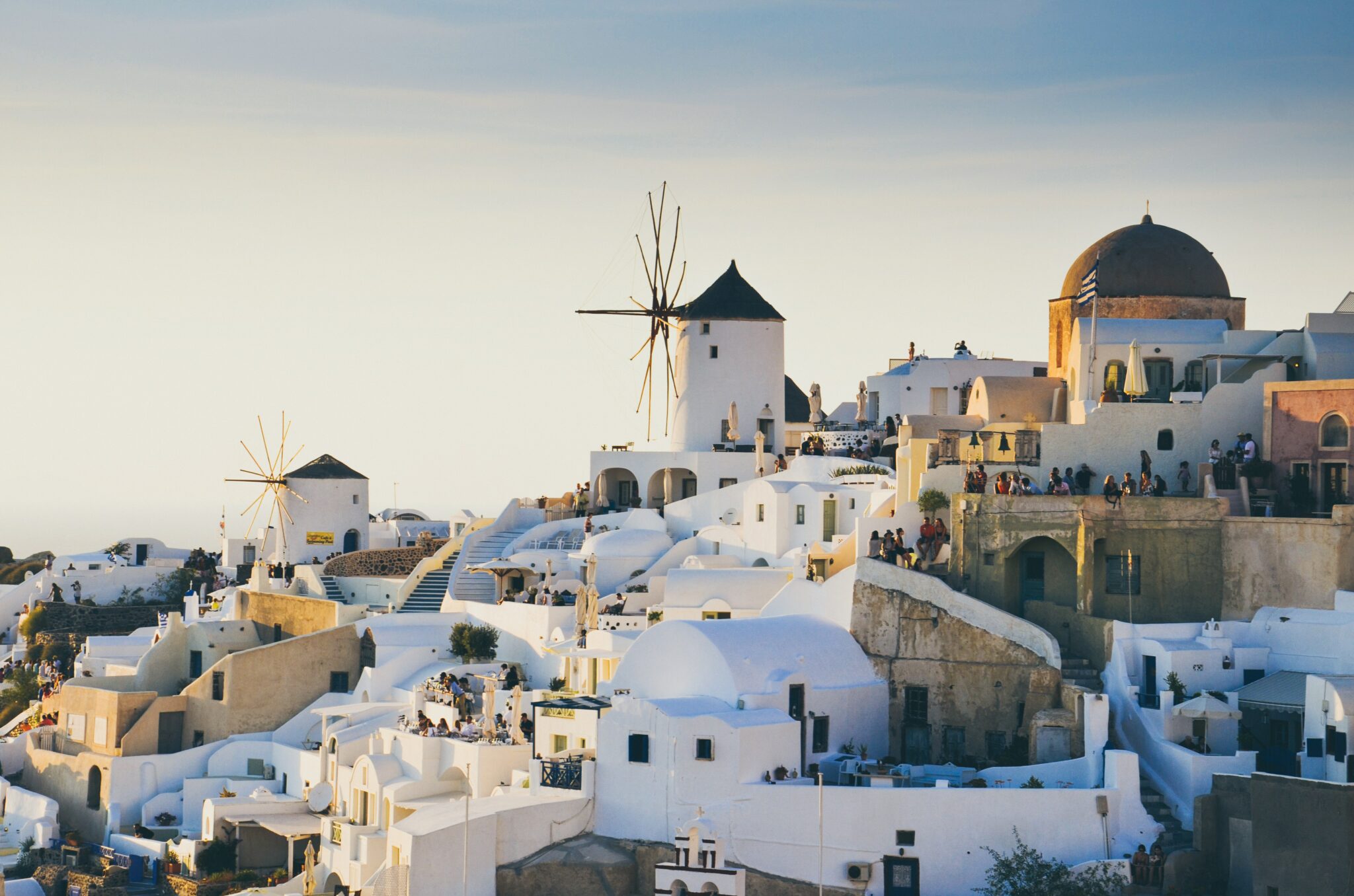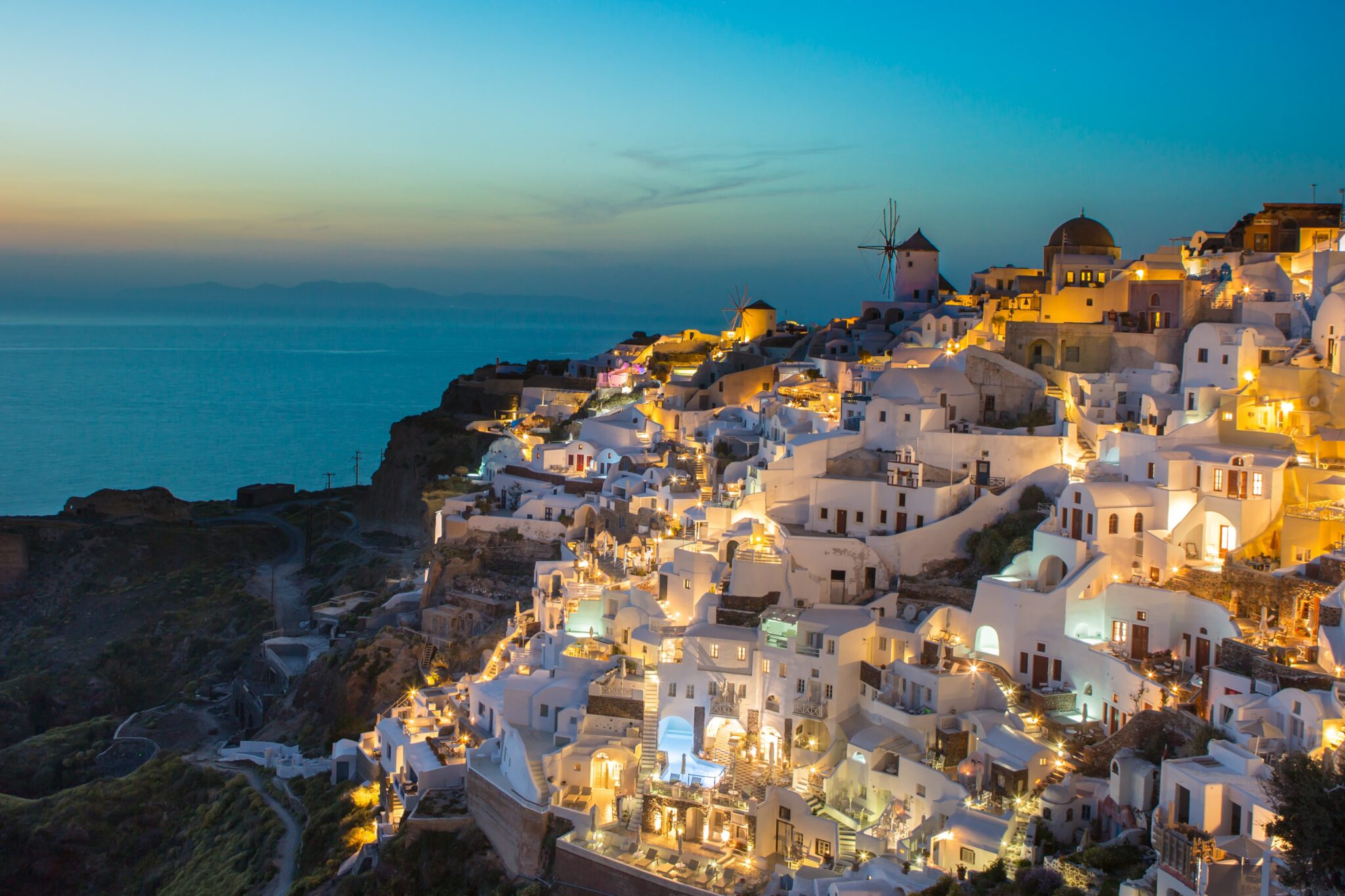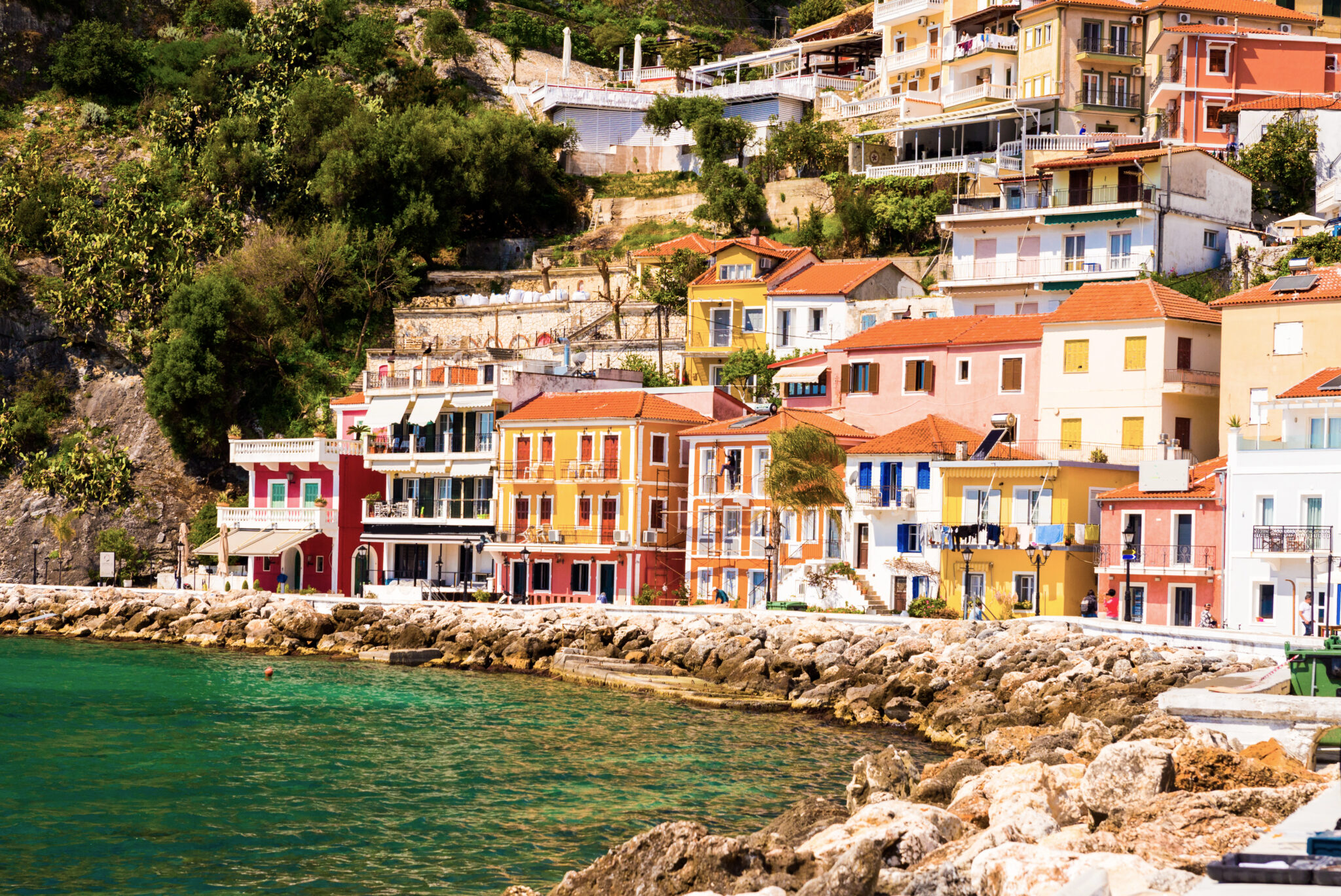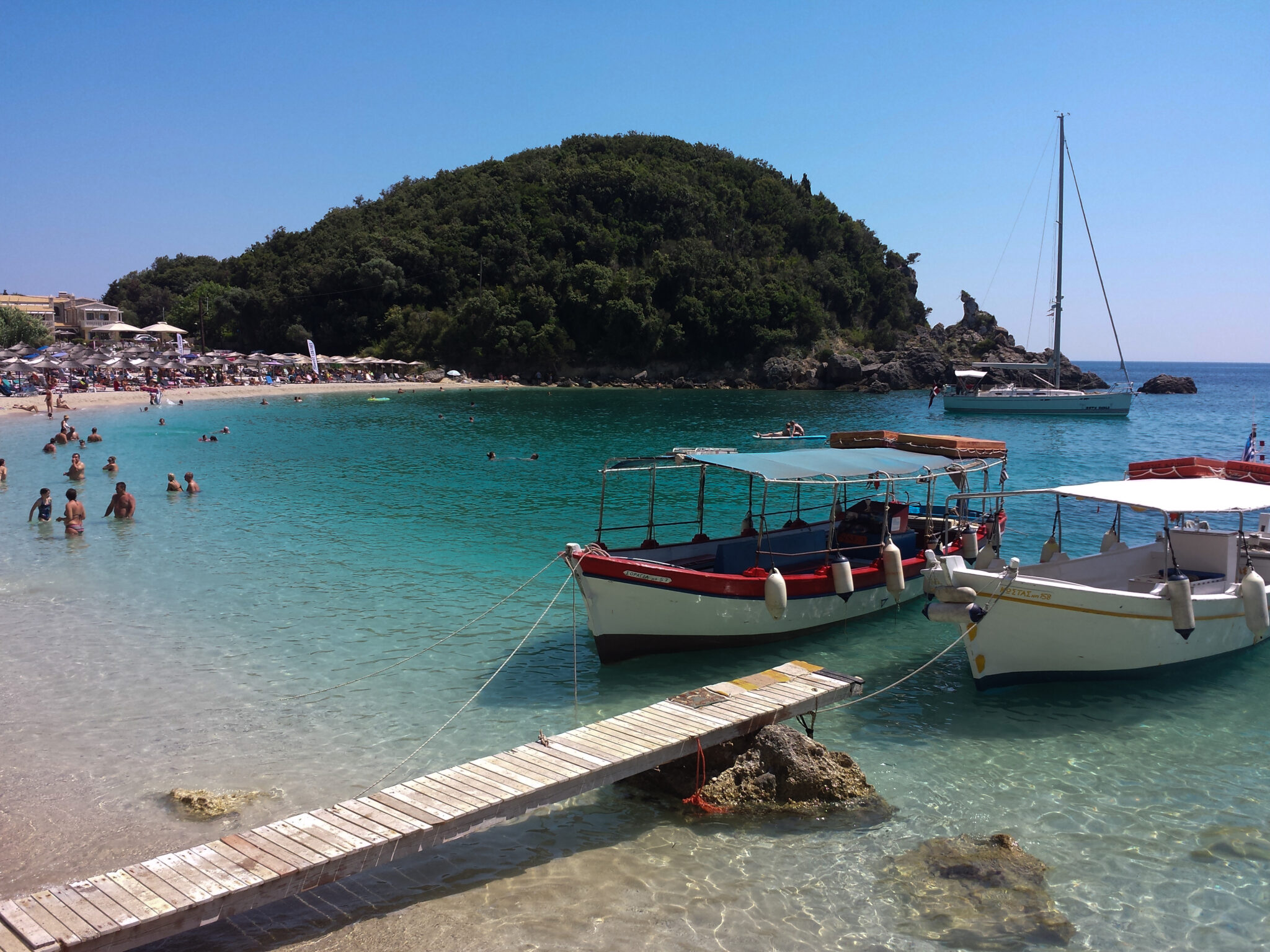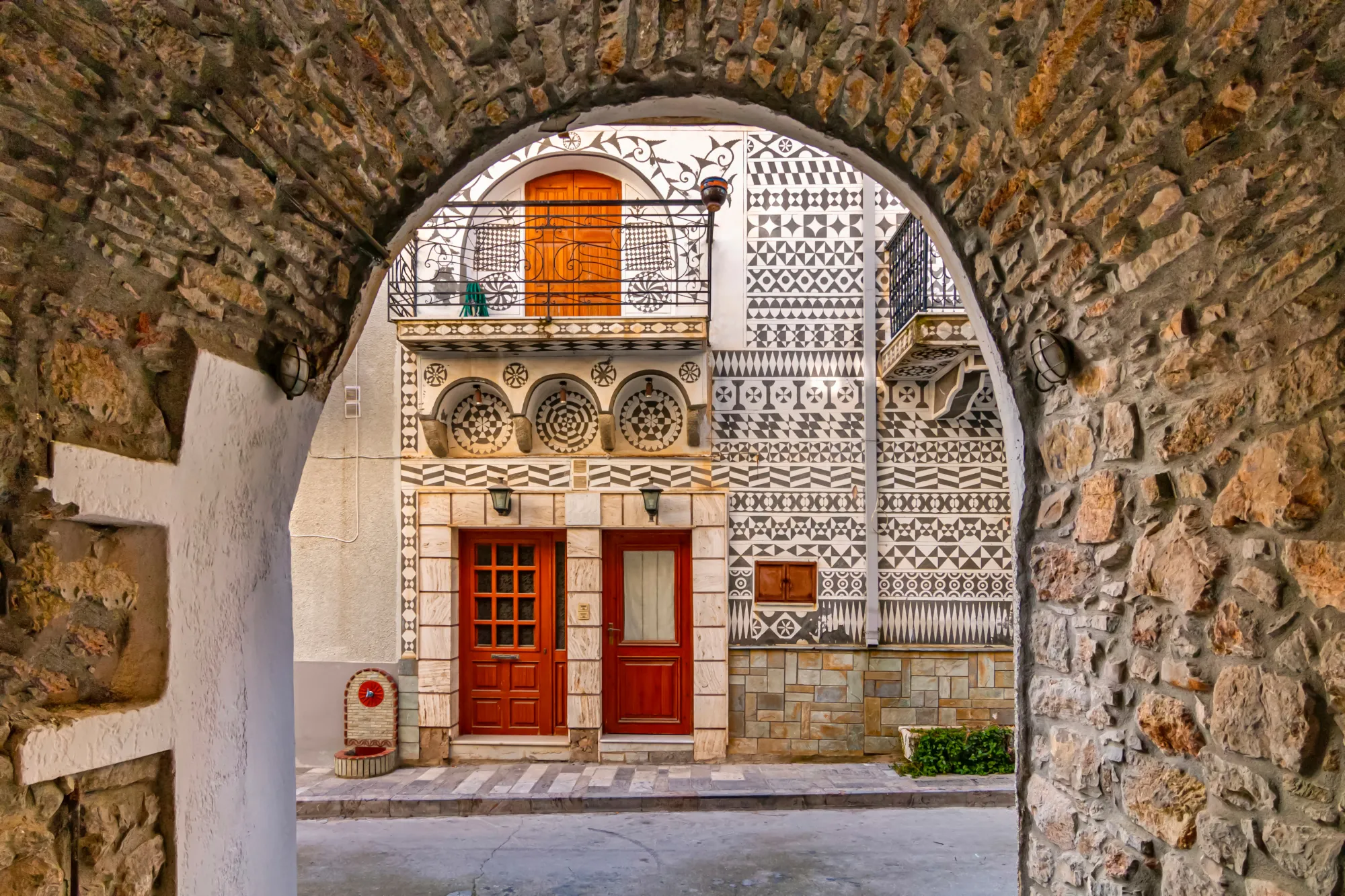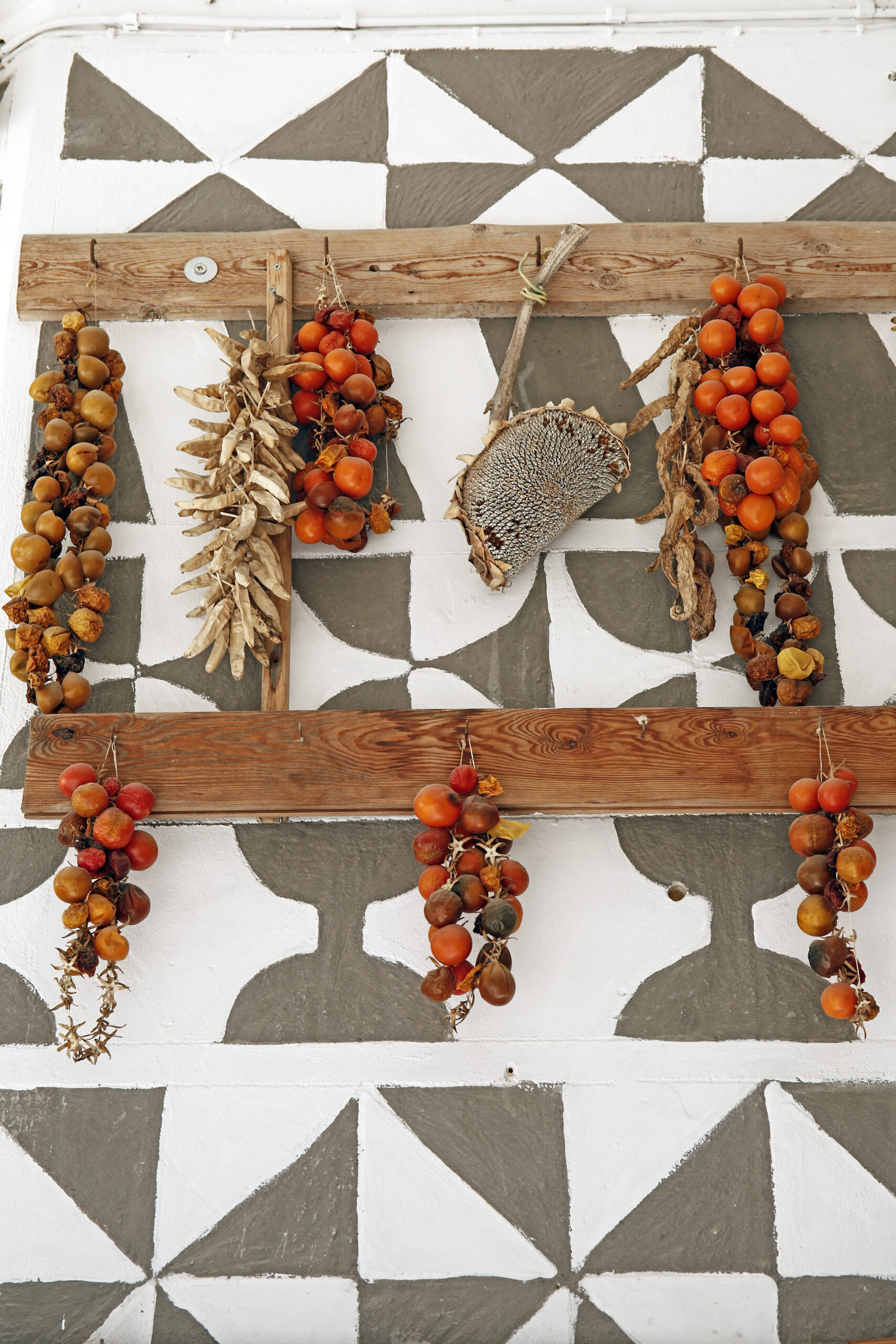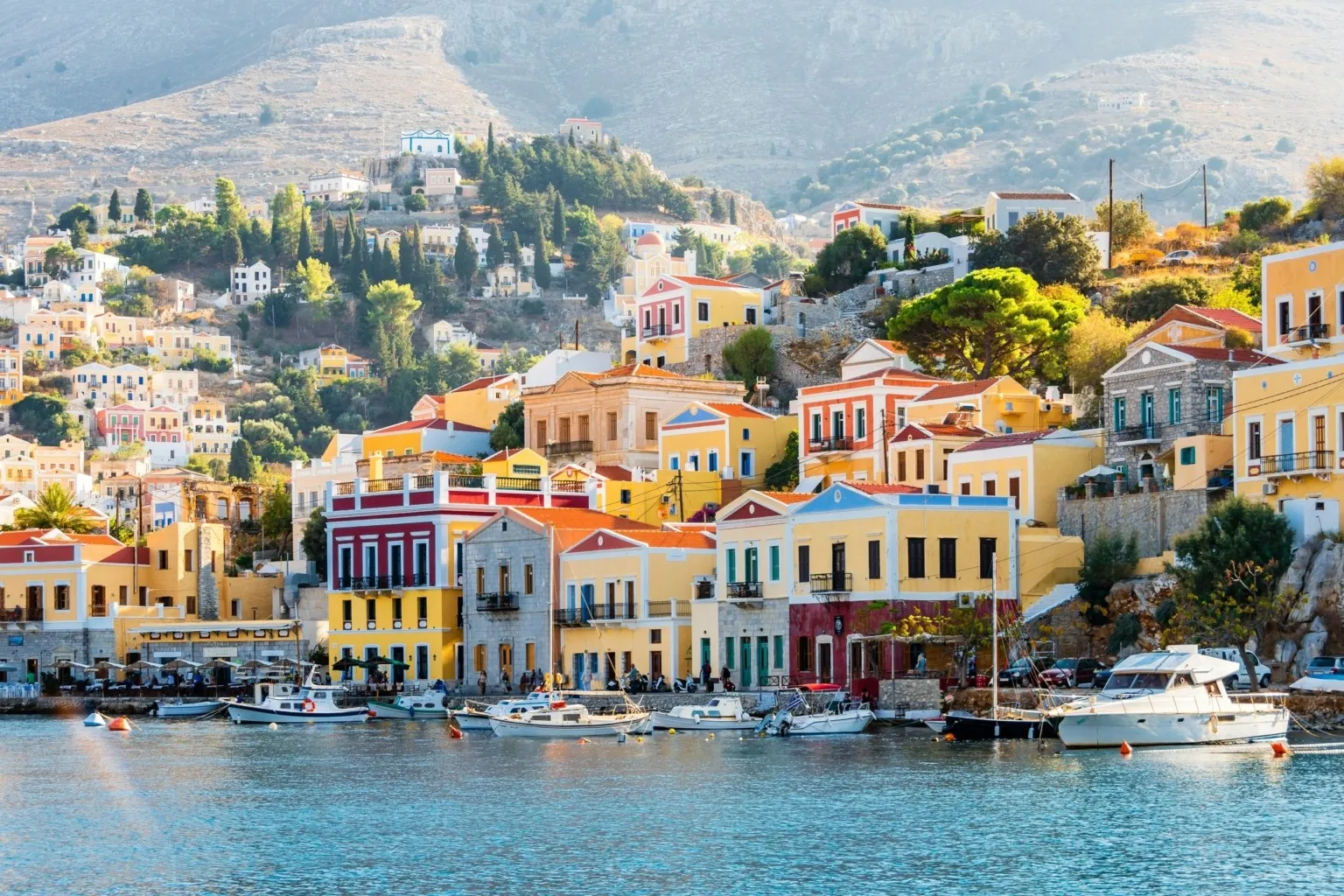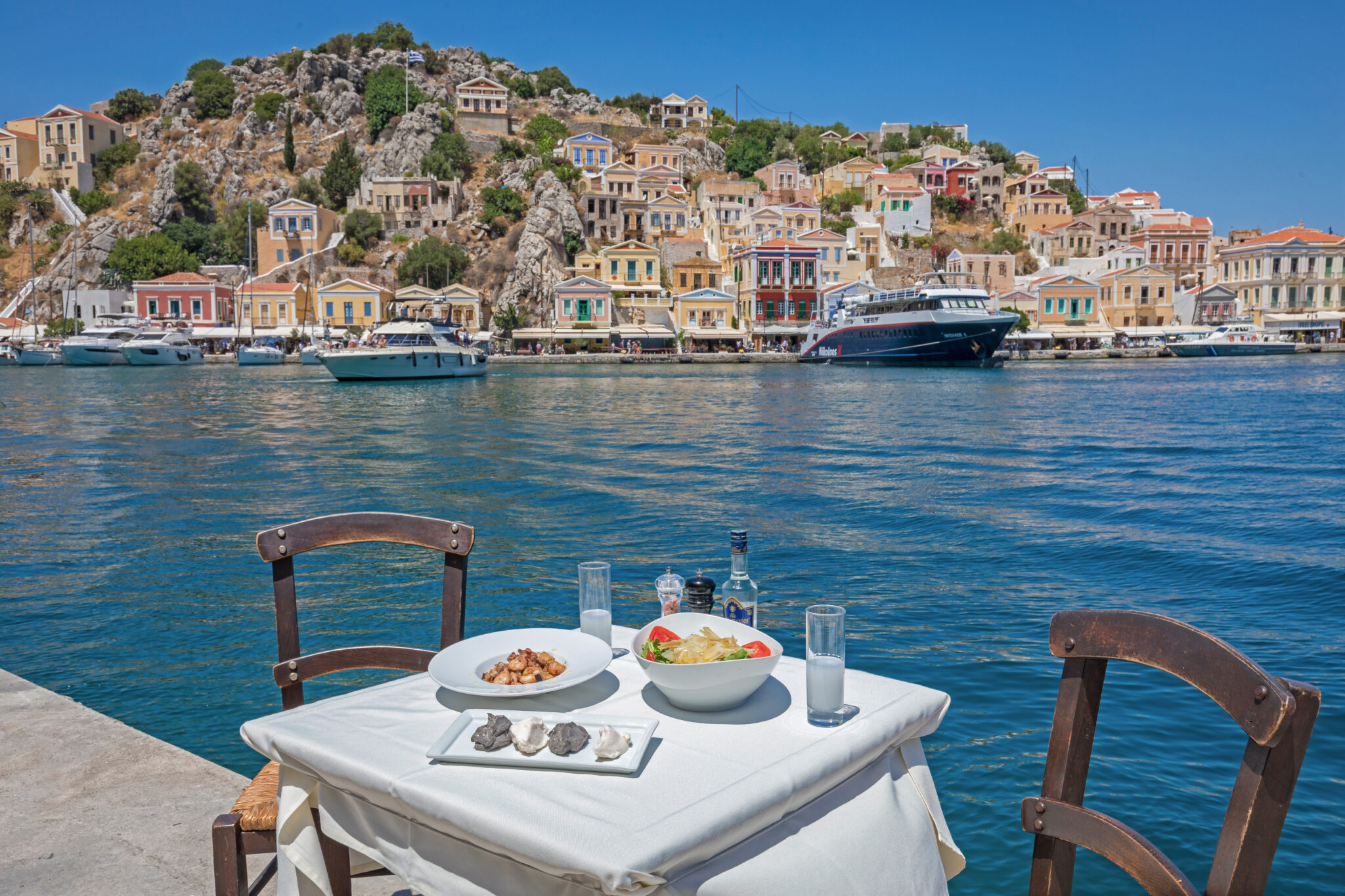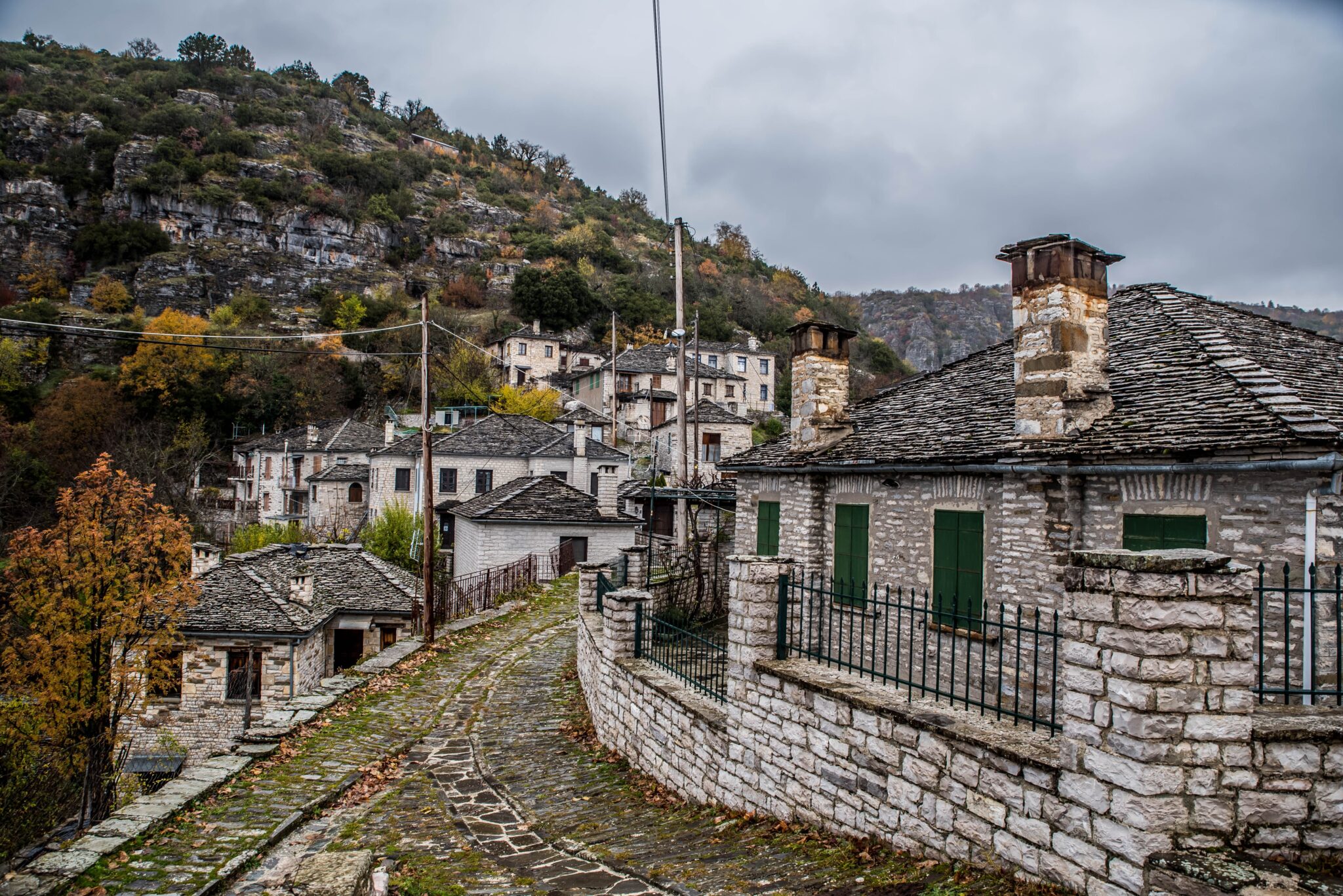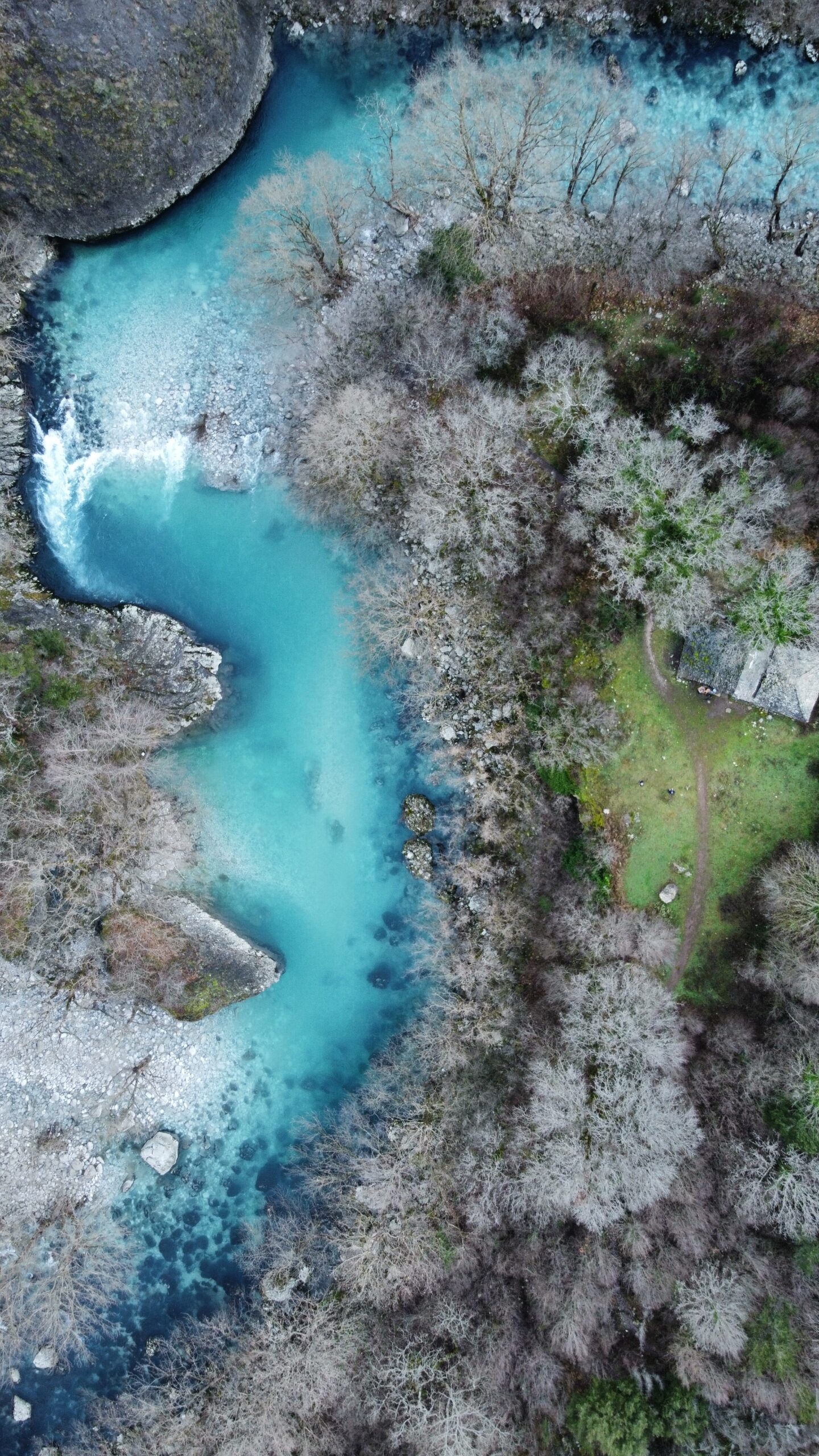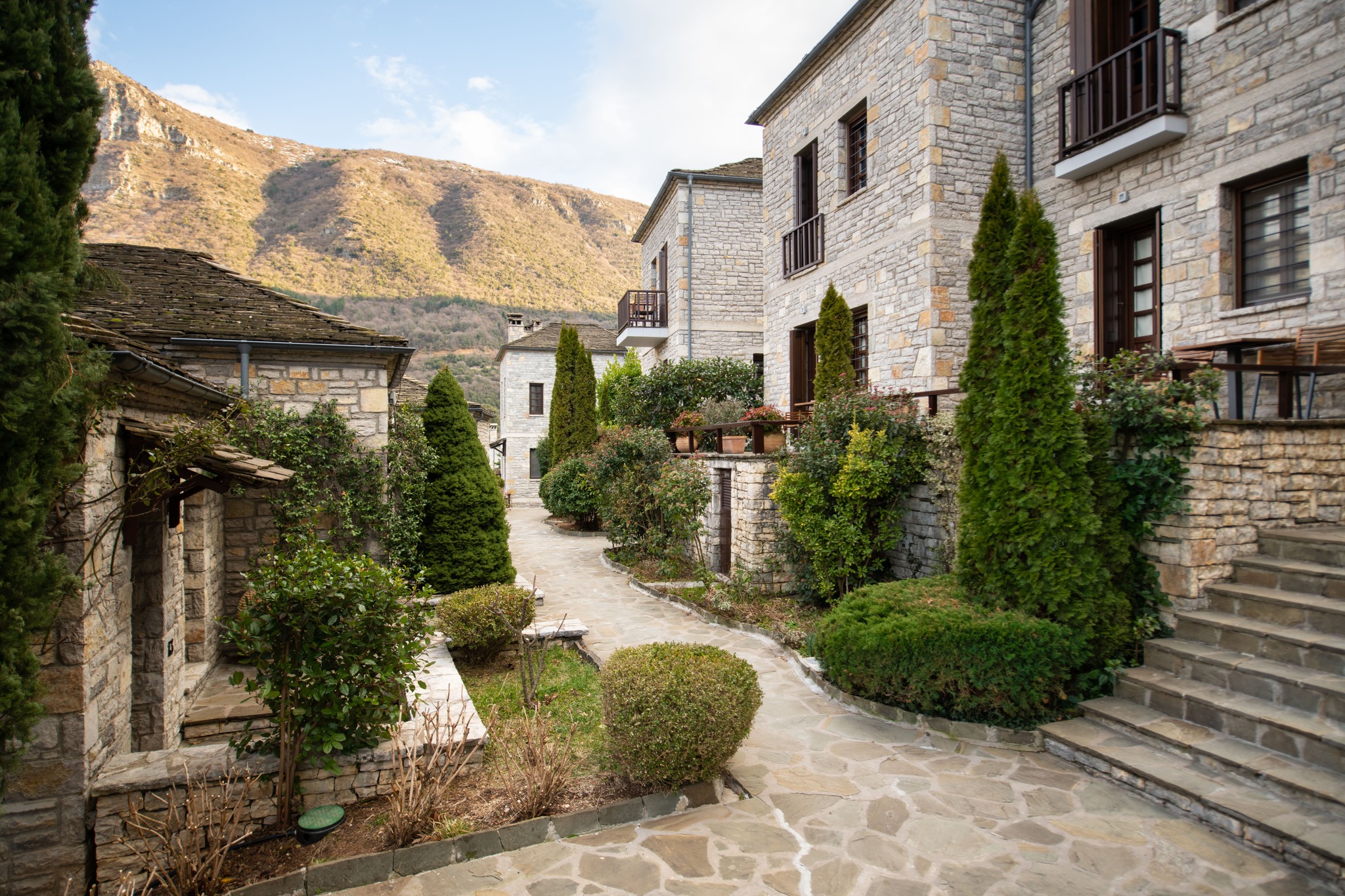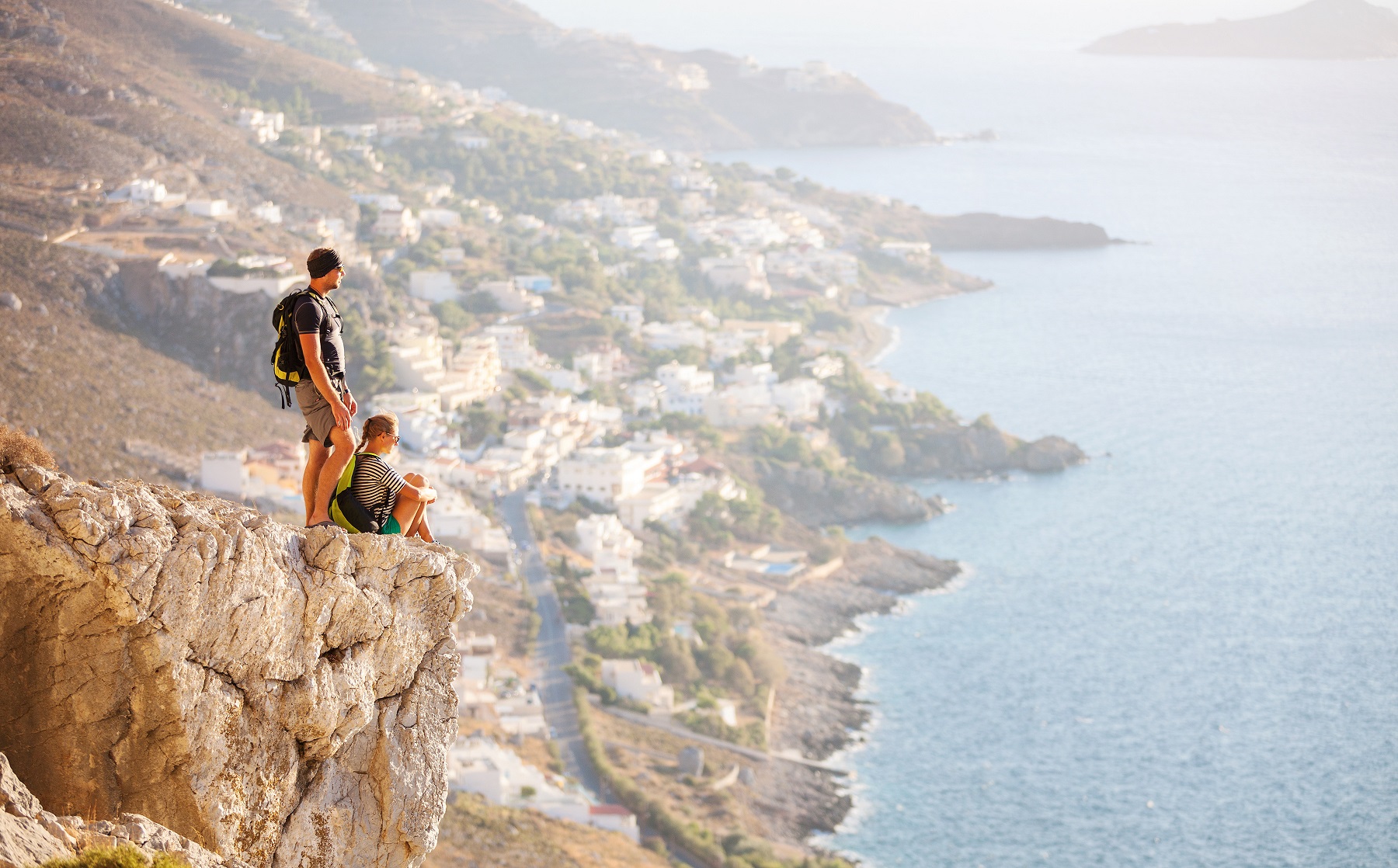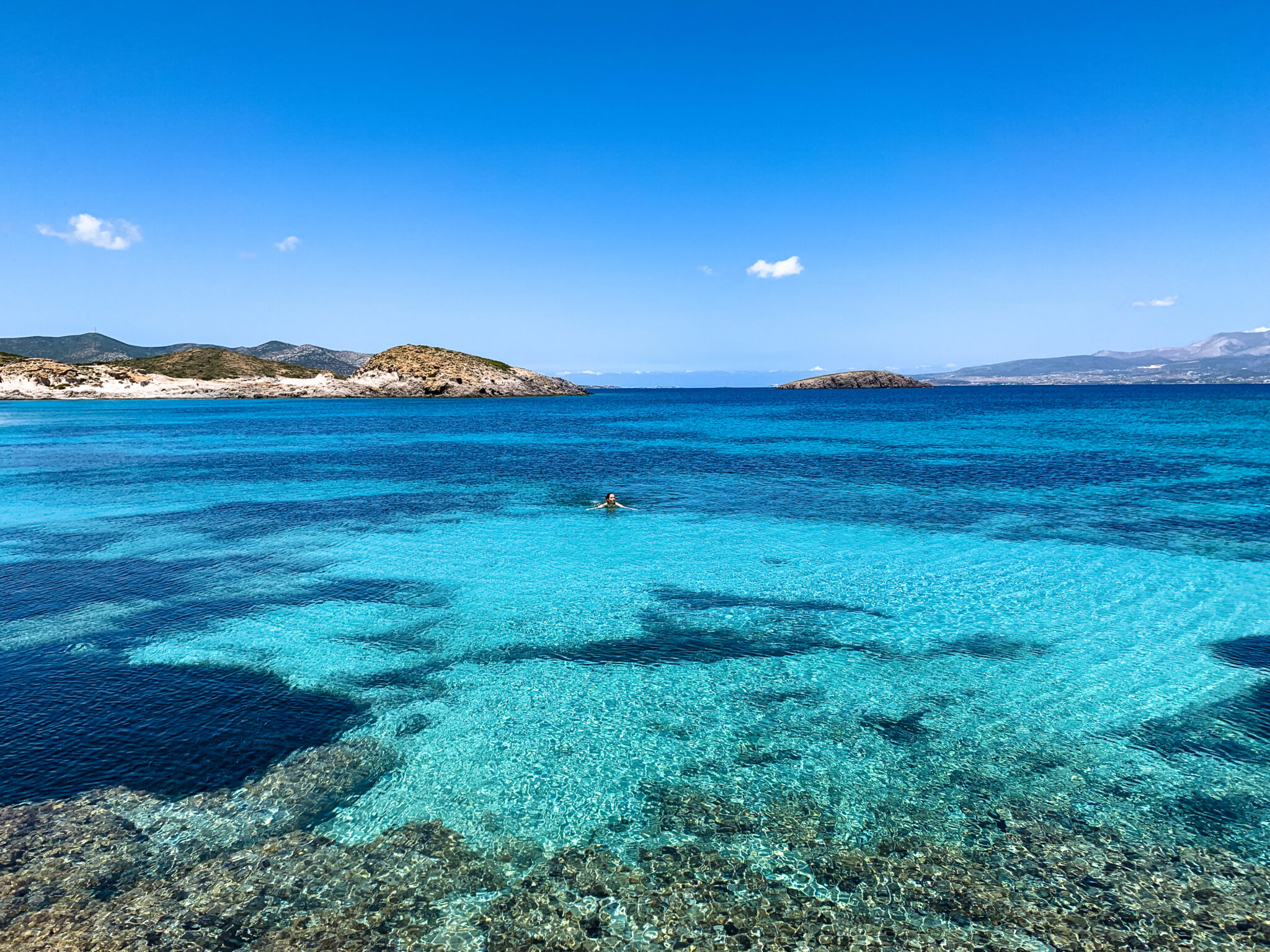Greece is a truly multifaceted country, with some of its landscapes reminiscent of places as far and wide as the moon, the desert, the lush French countryside, exotic tropical paradises and majestic snow-swathed mountains. As well as the distinctive natural setting of each place, formed over the millennia by its geographical location and climatic character, each destination has also been uniquely shaped over the centuries by a palimsest of cultural influences from occupying nations or invaders. The enforced presence of Ottomans, Venetians, the English and even pirates led to architectural, cultural, gastronomic and social changes, while the Byzantine empire and the Christian faith also significantly affected the way villages, towns and cities were built and run, and how they appear today.
The result of all these influences – from natural and political to religious and social – is that today’s visitor can witness a fascinatingly multifaceted landscape of unique places across the nation. Here, we introduce you to our 20 favourite destinations – many of them UNESCO World Heritage Sites – across the country’s mainland and islands, each with its own singular beauty and aesthetic appeal. All of them are composed, each in its own characteristic way, of a singular combination of magnificent scenery, nature, culture and physical form, and imbued by a special ambience and eye-opening allure.
Anafiotika, Athens
Built in the 1830s by stonemasons from the island of Anafi, who settled there while building King Otto’s palace (today’s Parliament building), and later settled in by migrants from Asia Minor, Anafiotika is a surprising marvel next to the Acropolis. As you make your way through its tranquil, winding village-like streets, the typical Cycladic aesthetic of Anafi is evident in the whitewashed, cubic houses with brightly coloured shutters and doors and plant-filled courtyards. Climb higher and you’ll also be rewarded with breathtaking views of Athens below and the Acropolis above. The area’s Byzantine churches, St George of the Rock and Agios Simeon, add an extra layer of the area’s history to the breathtaking scenery.
Chania, Crete
In Chania, in western Crete, each view you regard reveals a chapter of the Cretan city’s illustrous history. To immerse yourself in its scenery, walk along the Venetian harbour, where fishing boats and ancient walls echo a lively present and storied past. Its skyline is a mix of Byzantine churches, Greek Orthodox monasteries and Ottoman mansions, towers over narrow alleys and Venetian townhouses. Admire its Roman ruins, seafront promenades, fortress walls and Ottoman baths, and visit its many museums, among which are the Naval Museum, Archaeological Museum, Museum of Byzantine Icons, and the “Cretan House” Folklore Museum. Look up to find minarets meeting the sky in Splatzia Square and the surrounding Turkish quarter, and in Halepa, once the aristocratic neighbourhood of wealthy merchants and diplomats, feel the quiet elegance as you observe its grandiose architecture. Throughout the year, Chania remains vibrant and active, offering plenty of things to enjoy, from swimming and watersports at its beaches and globally exemplary food and wine, to hiking in astounding surrounding landscapes like the Samaria Gorge and the White Mountains and attending traditional festivals. Read more about Chania
Corfu Old Town, Ionian
In Corfu’s old town, picture Venetian, French and British architectural and other influences against the backdrop of the Ionian Sea. A UNESCO World Heritage Site, the town is a kaleidoscope of pastel and terracotta buildings with grand squares and narrow, winding alleyways. The skyline is dotted with a myriad of church belfries, each unique, inviting exploration of their ornate marble entrances. It’s a place where you’ll feel a palpable sense of its history and sophisticated local culture, to be experienced especially at the Archaeological Museum, the Museum of Asian Art, the Numismatic Museum and the Solomos Museum, or during the lively summer months, and especially at traditional Easter festivities. Here, in the town’s many restaurants, you’ll also indulge in a sophisticated cuisine heavily inspired by Venice. From the Old Fortress to the Achillion palace and the Angelokastro Castle, breathtaking views are guaranteed to make you fall in love with this place that, uniquely for Greece, remained untouched by Ottoman rule. Read more about Corfu’s Old Town
Delos, Cyclades
In mystical Delos, an uninhabited, five-kilometre-long island that was once the spiritual heart of the ancient world, you’ll gain mesmerising perspectives, both literally and figuratively. Excavations have uncovered much of the cosmopolitan Hellenistic city, and visiting this UNESCO World Heritage Site is deemed as one of the most rewarding archaeological experiences in the Mediterranean. Celebrated as the birthplace of Apollo and Artemis, this ‘sacred island’ combines awe-inspiring vistas out to the sea as well as an evocative exploration of the ancient ruins and mosaics hinting at its mythical past, which now lay splayed out in the sun, such as the Great Temple of Delia, the Avenue of the Lions, the Temple of Isis, the Minoan Fountain and the Residence of Dyionissus. Visit by boat from Mykonos to explore the ruins, snorkel around the island and climb the dusty, windswept path to the top of Mount Kynthos to admire the views of Delos from above and the surrounding islands. Read more about Delos
Delphi, Mainland
Delphi, the ‘world’s ‘centre of the world’ according to the ancient Greeks, now captivates with its extraordinary remnants and spanning views. Here, the Tholos of Athena Pronoia, the Temple of Apollo, and the ancient Gymnasium and the Stadium are just some of the dazzling remnants sprawled across the verdant slopes, overlooking a sea of olive groves that sprawl down to the Gulf of Itea. This sacred site, where the Oracle and Pythia once offered answers to the most volatile questions, is now a UNESCO World Heritage Site with a sophisticated and modern Archaeological Museum to boot, drawing visitors to its still-mystical setting. Out of sight is the modern village of Delphi, a small settlement with its own charms that’s just a 10-minute drive from Delphi’s ancient site, and picturesque Arachova town. Read more about Delphi
Hydra, Argosaronic
Just two hours by ferry from Piraeus, this car-free and famously charming island is a visual delight, with its cobbled streets and a coastline lined by neoclassical dwellings so lovely that they look like a theatre set. The island’s architecture defines its beauty, with every size of mansion mainly from the 18th and early 19th centuries standing as a testament to Hydra’s rich maritime history. Walking around the island, on the harbour-front and along atmospheric backstreets and long, steep steps, you’ll come across luggage-carrying donkeys and plenty of cats, as well as a plethora of tavernas, boutiques and cafes tucked away in quiet corners. Stop to catch glimpses of dreamy views of the Hora and the seascapes and soak up the quaint atmosphere of a bygone era, which has seduced so many painters, musicians and writers. Visit the Historical Archives Museum, the Ecclessiastical Museum and the Lazaros Kountouriotis Mansion. Read more about Hydra
Kastellorizo, Dodecanese
The harbour town of Kastellorizo, with its charming neoclassical Venetian buildings set against the cobalt blue of the sea, is the setting for an unparalleled ambience, as captured in the film ‘Mediterraneo’. There is a U-shaped settlement, known as “to kordoni” (the shoestring) around the port, which means that accommodations, restaurants and shops are at the water’s edge, with Mesi tou Yialou (the central part) being the heart of all the action. For a quieter vibe, visit Mandraki, Kastellorizo’s second harbour. Sandy beaches may be scarce, but you can dive off small rocks into the invigorating waters. Notable places to stop at include the Lighthouse, Kavos castle, Megalo Nifti’s Cape, the mosque that now houses the Kastellorizo Historical Collection and Navlakas. Also, not to be missed is the Museum of Puzzles, the only one of its kind in Greece. The island’s main attraction is the Blue Cave, one of the most remarkable sea caves in the world. Accessible only by boat, it is famous for its crystalline blue waters that shimmer in the sunlight. Read more about Kastellorizo
Klima, Milos, Cyclades
Klima, a tiny village in Milos with fewer than 20 residents, is a key destination for its picturesque, colourful houses and stunning sunset views. The village offers limited accommodation, three charming tavernas and two churches. Its uniqueness stems from the syrmata: traditional two-level structures built by local fishermen. These boat houses, integrated into the volcanic rocks, feature a boat storing area at sea level and a living space above. Historically, fishermen are thought to have painted their homes in vibrant colours to mirror the shades of the island’s rock strata, or in order to effortlessly recognise their own home when returning by boat in the dark. Having now undergone modern restoration, some of the houses today provide unique tourist accommodations with the sea at your doorstep. This is not the only scenic fishing village on Milos; you can also visit Aghios Konstantinos, Areti, Fourkovouni, Fyropotamos, Mandrakia, Mytakas and Schinopi. Read more about Milos
Lindos, Rhodes
Lindos, a magnetic tourist destination once adored by the likes of Aristotle Onassis, Giovanni Agnelli, Pink Floyd and Brigitte Bardot, is renowned for its architecture and picturesque streets. At its majestic Acropolis, perched at 116 metres high on a cliff, you’ll find the remnants of the Athena Lindia temple dating back to the 4th century BC, along with the Propylaea, the grand Hellenistic Stoa, and the Byzantine-era Church of Saint John, and breathtaking views. Visitors to this car-free town also admire its fascinating whitewashed buildings, the classic “kamarika” houses constructed by using a blend of straw, sand, and lime, with walls as thick as 50 centimetres. Many of these houses also feature skylights for improved air circulation, a spacious internal arch, and floors adorned with pebble mosaics known as “hochlakia.” For a swim, visit the stunning beach of St Paul, with its aquamarine waters, or Megalos Yialos. If you’re in the mood for shopping, you’re in luck; the main street leading up to the Acropolis is lined with shops selling everything from clothes and accessories to tourist trinkets and jewellery. Read more about Lindos
Medieval Old Town, Rhodes
Rhodes’ Old Town, a UNESCO World Heritage site, is a remarkable example of medieval urban planning, where imposing walls mark a line between history and modernity. Walk along the medieval Street of the Knights and Head to the Palace of the Grand Master, stopping also to visit the three-aisled Gothic church of Our Lady of the Castle. During this incredibly scenic stroll, you’ll be transported to the Middle Ages as you catch views of lush greenery, palm trees, along with ancient ramparts, towers, and walls. The Old Town’s architectural tapestry spans various eras, and includes 15th and 16th-century structures alongside 30 Byzantine churches, six mosques, a synagogue and cool, fountain-adorned squares for people-watching. The nearby Mandraki area contrasts with Venetian architecture, a lively marina, and a bustling mix of shops, cafes, and restaurants. Art lovers shouldn’t miss out on the Municipal Art Gallery on Symi Square, where works by prodigious Greek artists are displayed. Read more about Rhodes’ Old Town
Meteora, Thessaly
Meteora, in central Greece, is renowned for its majestic sky-high rock formations that rise to create a dramatic landscape straight out of a fairytale. The rocks, unique geological formations, are where 24 ancient monasteries were built in a testament to ingenious engineering from centuries past, specifically since the 11th century when monks first retreated there. Today, six of these monasteries are accessible, year-round drawing global visitors to gawp at this UNESCO World Heritage site with its jaw-dropping vistas. Meteora has also become a popular destination for hikers, mountain bikers and rock climbers, and the next-door town of Kalabaka offers a broad choice of places to eat and stay at. For an extraordinary, almost otherworldly adventure, consider taking a tour from the skies in a hot air balloon. Read more about Meteora
Metsovo, Epirus
Surrounded by the towering Zygos, Peristeri, and Katara mountains, the village of Metsovo, built at an altitude of 1,160 metres, has a serene, old-world aura and revivingly fresh air. Its all-embracing charm is enhanced by the traditional Epirotic architecture of stone houses with slate tiled roofs, stone cobbled streets, a main square shaded by plane trees, where the chuch of Aghia Paraskevi stands, and the beautiful backdrop of the lush Pindos mountains. This picturesque setting, combined with the charm of shops selling famed local cheeses, souvenir stores, quaint tavernas and the smell of wood smoke in the air, makes Metsovo a top destination, especially in the winter months, when it is especially popular among skiers who frequent the Metsovo Ski Centre. Metsovo is also very popular for its delicious regional cuisine and fine, locally produced wines such as those from the Averoff Estate. Visit the Metsovo Folk Art Museum to get a better sense of the traditional culture, and for something very different, the Averofeios Garden (five minutes’ walk from the main square) to see a layout of the flora of Mount Pindos. Read more about Metsovo
Monemvasia, Peloponnese
Spectacular and dizzingly romantic all year round, Monemvasia was separated from the Peloponnesian coast after an earthquake in 375 AD and became an island, once only accessible by boat but in modern times connected to the mainland by a short causeway. It is known for its enchanting medieval castle town, strategically built into a sea-facing rock and originally hidden from enemies on the mainland. Overlooking the sea (and being a view to behold in itself), it consists of two different levels and fortified areas: Pano Poli, now uninhabited, and Kato Poli. This historic town, a melting pot of civilisations, has passed through Venetian, Turkish, French, pirate and Greek hands, all of which have left their mark. Entering the medieval tower town is like stepping back in time to the Lacedaemonians of the 6th century BC, but within its walls, visitors will find contemporary restaurants, shops, cafes and several cosy and luxurious accommodations. Read more about Monemvasia
Mount Athos
Mount Athos, only accessible to male visitors, is a tranquil UNESCO World Heritage Site on the Halkidiki peninsula. A spiritual haven for Orthodox Christianity, it is home to 20 monasteries set amidst lush landscapes and tranquil settings. Covering some 350 square kilometres, the area boasts breathtaking natural beauty, with its rugged terrain and coastal views offering a sense of profound peace. The architecture of the Athos monasteries, having endured for over a millennium, is striking; these are expansive complexes featuring magnificent churches, towers, aqueducts, welcoming areas, living quarters, dining halls and kitchens. Notable among them are Simonopetra, an awe-inspiring structure perched on the brink of a precipitous rock; Aghios Panteliemonas, distinguished by its unique green roofs; the fortress-like Iviron; and paramount in stature, the majestic monasteries of Megistis Lavras and Vatopedi. Staying here is a retreat for the body, mind and soul, as you connect with the age-old practices and culture of the monastic community surrounded by the sea and pure, wild nature as well as artfully cultivated food gardens and fields. Read more about Halkidiki
Nafplio
Romantic Nafplio was Greece’s first capital after the nation’s liberation from Ottoman oppression and remains one of Europe’s most beautiful places. The car-free (there is a large car park just outside) town’s beauty comes from its neoclassical buildings, many painted in soft pinks and yellows, with showers of fuschia-coloured bougainvillaea draped against walls and blue window frames, and the blue backdrop of the sea. The Venetian castle of Bourtzi, once a prison, is especially gorgeous at night when it is beautifully lit, taking centre stage as people sip aperitivos on the harbourfront. Lose yourself in the charming backstreets streets of Nafplio, to discover unique finds in delightful little boutiques, cafes, restaurants and gelato shops. Climb up the step-streets leading to Ano Poli and the Psaromahalas Quarter, and if you’re feeling brave walk up to the Palamidi castle, for incredible views. Read more about Nafplio
Oia, Santorini
Legendary Oia in Santorini is known for its classically Cycladic sugar cube houses cascading down Instagrammably dramatic cliffs. Set on volcanic ash, the village and its vistas are especially enchanting at dusk when pastel coloured walls are set ablaze and later as houses glow in blue-green hues, reflecting from plunge pools. The Oia sunset, a world-famous spectacle, draws endless crowds from across the globe, especially at the Castro, partially destroyed by the devastating earthquake of 1956. Until the 19th century, the village, known as Apano (or Pano) Meria meaning “the upper side,” thrived as a notable shipbuilding hub, and its residents, referred to as Oiates or Panomerites, were primarily sailors or shipowners. Now Oia a luxurious destination with top-notch hotels built into the rock and fine dining restaurants as well as a lively art and shopping scene with plenty of art galleries and mainly clothing and jewellery stores. If you’d like to enjoy a hike, the scenic walk from Oia to Fira is a memorable experience, showcasing Oia’s unique blend of natural beauty and cultural wealth. Read more about Oia and Santorini
Parga
Parga has a tropical natuural splendour that makes it stand out, intriguingly combined with mainly Venetian architecture reminiscent of the Italian Riviera. Bustling with tourists in the summer months, it is a place for great swims in its emerald green and blue waters, fine dining as well as hearty eats at traditional tavernas and visits to fascinating historical sites. Walk past its colourful, densely built houses and scenic winding cobbled streets and up to see breathtaking views from the Venetian Castle, a symbol of resilience through the ages. From here you’ll enjoy panoramic perspectives of the Ionian Sea and the beach of Valtos, while there is also a cafe from where you can sit to soak up the dreamy vistas. Swim at Kryoneri, the town’s main beach, or explore Piso Kryoneri and Valtos, which are located on either side of the town. No visit to Parga is complete without a visit to the springs of the River Acheron and the Nekromanteion, beautiful and atmospheric places that offer a dive into Greek mysticism and mythology. Read more about Parga
Pyrgi, Chios
In Pyrgi, artistry meets architecture and local history. A mere 25 kilometres from Chios town, this medieval stronghold, once under Genoese rule, is a visual feast. Every wall and every balcony is a canvas for “xista” – Escheresque geometric patterns etched into whitewashed walls using black sand from Mavra Volia, revealing stark black designs against bright backgrounds. Located 25 km south of the island’s capital, Pyrgi is one of the largest villages in Chios, situated in the southern part of the island. It serves as the traditional center of the Mastic Villages, a group of communities dedicated to mastic agriculture, which are recognized on UNESCO’s Representative List of the Intangible Cultural Heritage of Humanity. The village tower, also a Genoese legacy, anchors the village, once serving as a fortress against raids, and offers lovely views. Read more about Pyrgi
Symi
Symi, a gem in the Aegean Sea and a standout in the Dodecanese, lies just 12 miles from Rhodes, radiating an elegance reminiscent of the Italian Riviera. Its hallmark is the vibrant neoclassical architecture, a design approach rooted in the historical traditions of Greek and Roman architecture: behold the view of 2,500 multi-coloured houses that could be straight from a classic Italian film. Gialos’ port and Hora (or Horio), cradled in a bay, showcase these buildings in hues of blue, pink, and green, all with distinct tiled roofs, reflecting Symi’s maritime heritage. The abundance of neoclassical architecture, infused with a touch of Symiot flair, harmoniously blends with traditional features like pebble mosaic floors, stone arches, and expansive, white-washed squares adorned with towering plane trees. The harbour’s 1881 Clock Tower and the Italian-era police building are iconic. Climb 500 stone steps to Hora to enjoy stunning views and see historic mansions housing the island’s museum complex. Though roads are few, Symi’s beach, offers a serene retreat. Don’t miss the Panormitis Monastery, a 15th-century marvel surrounded by cypresses and pines, and the castle in the main town, offering breathtaking vistas. Read more about Symi
Zagori, Epirus
With clean, fresh country air and surrounded by lush greenery in the heart of Epirus, Zagori, in the Pindus Mountains is made up of of 46 stone villages with exquisitely harmonious architecture, a testament to the area’s traditional craftsmanship. It’s a haven for hikers, rafters and anyone seeking a cosy country retreat in contemporary boutique accommodations. At the heart of the Vikos-Aoos UNESCO Global Geopark, Zagori also boasts the Voidomatis River, Aoos river, the towering Mt Tymfi and alpine lakes like Drakolimni, all amidst scenic traditional stone settlements where cobbled streets and slate roofs add to the harmony of the surrounding nature. Beyond the villages, the Stone Forest at Monodendri reveals a spectacle of slate towers carved over millennia among oaks and maples; walking among these geological wonders is like stepping back in time. And then there’s the astoundingly deep and verdant Vikos Gorge, the largest gorge in Europe and a must-visit spot. Read more about Zagori



